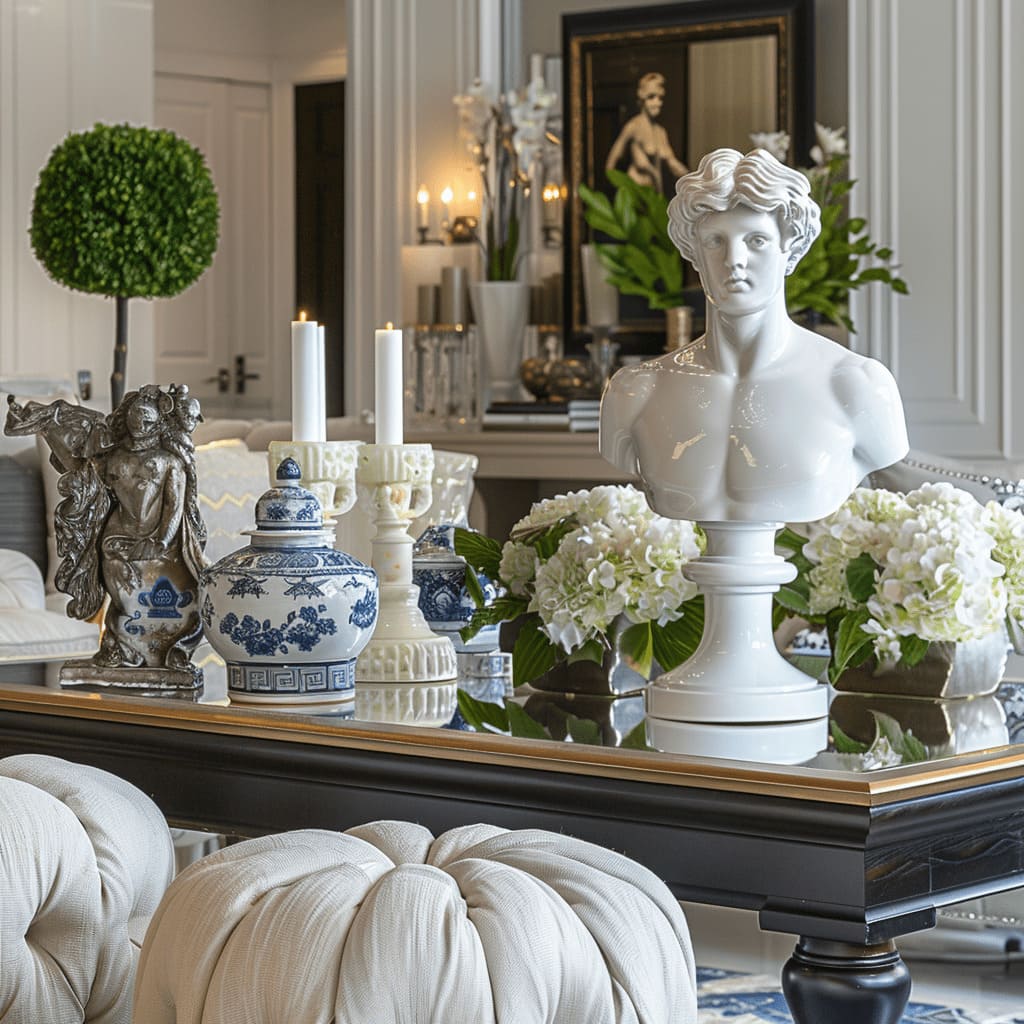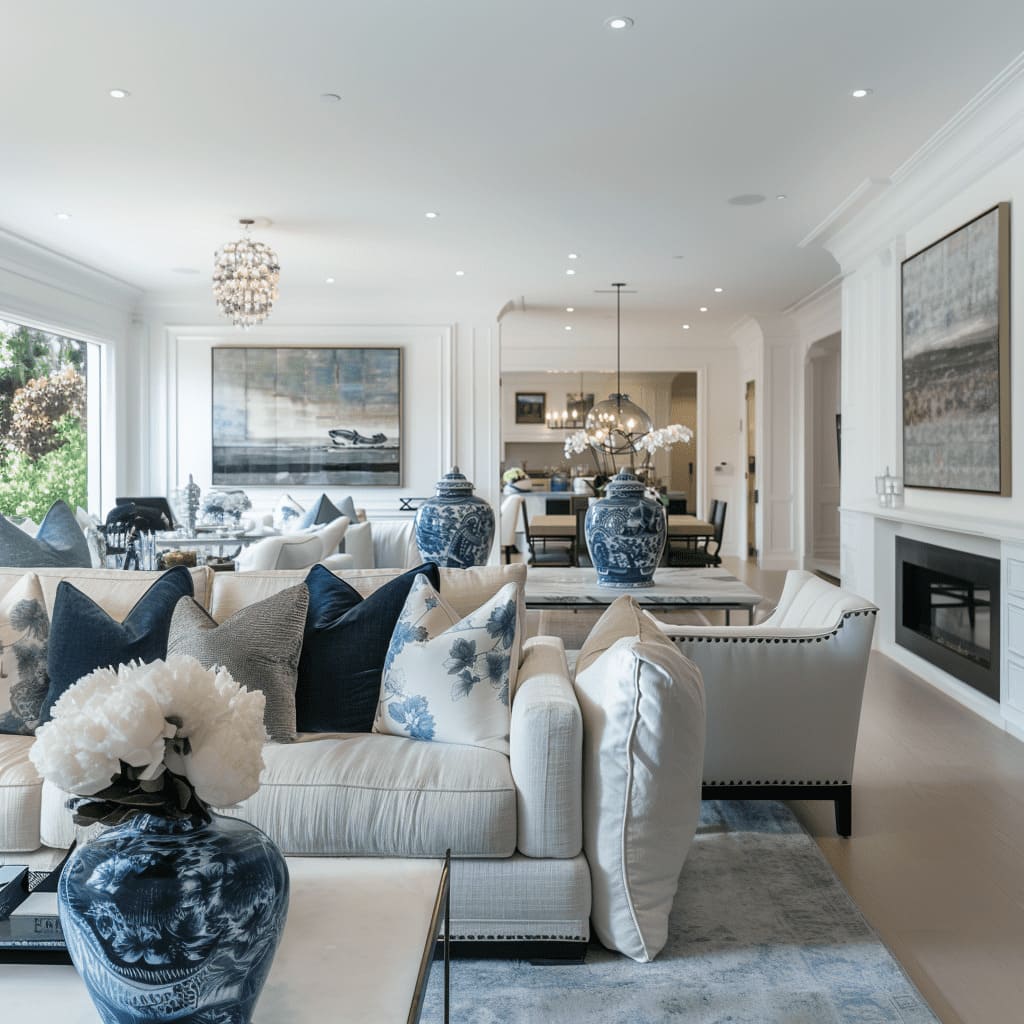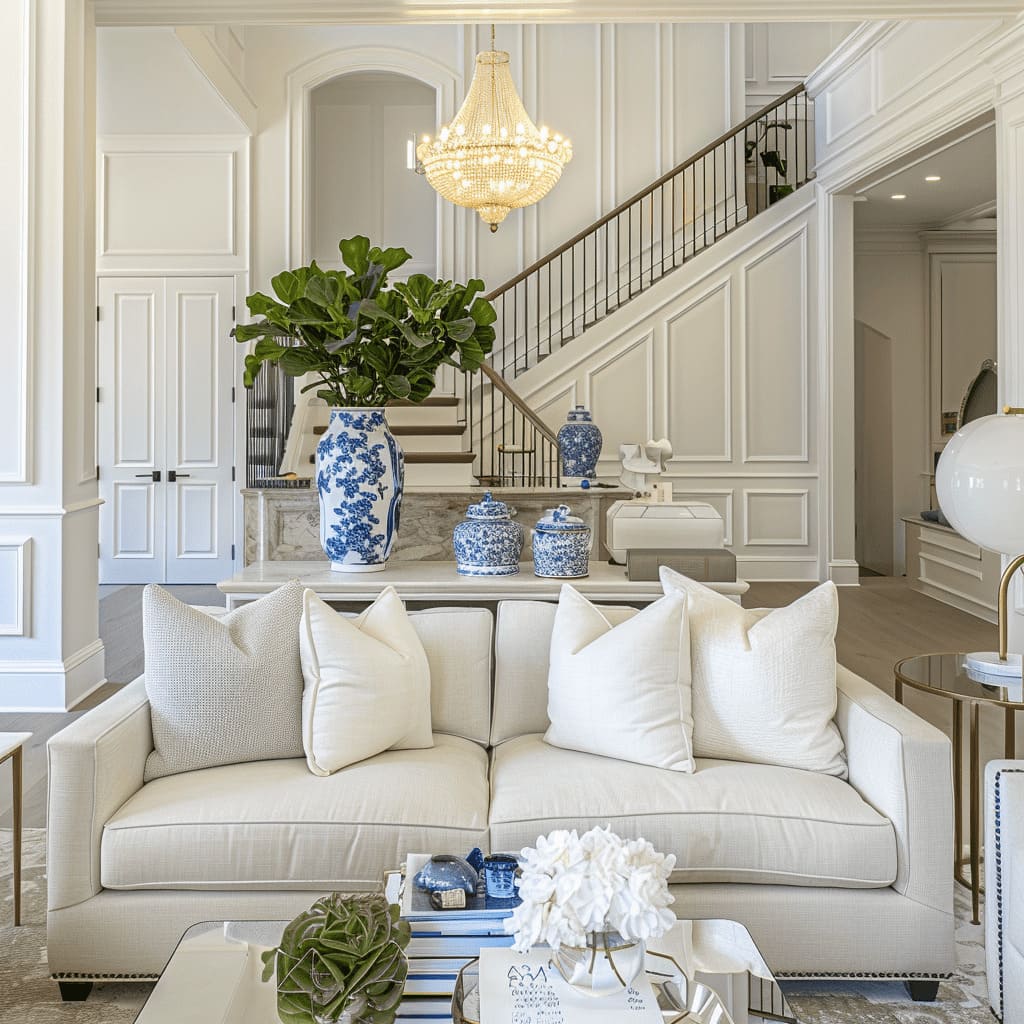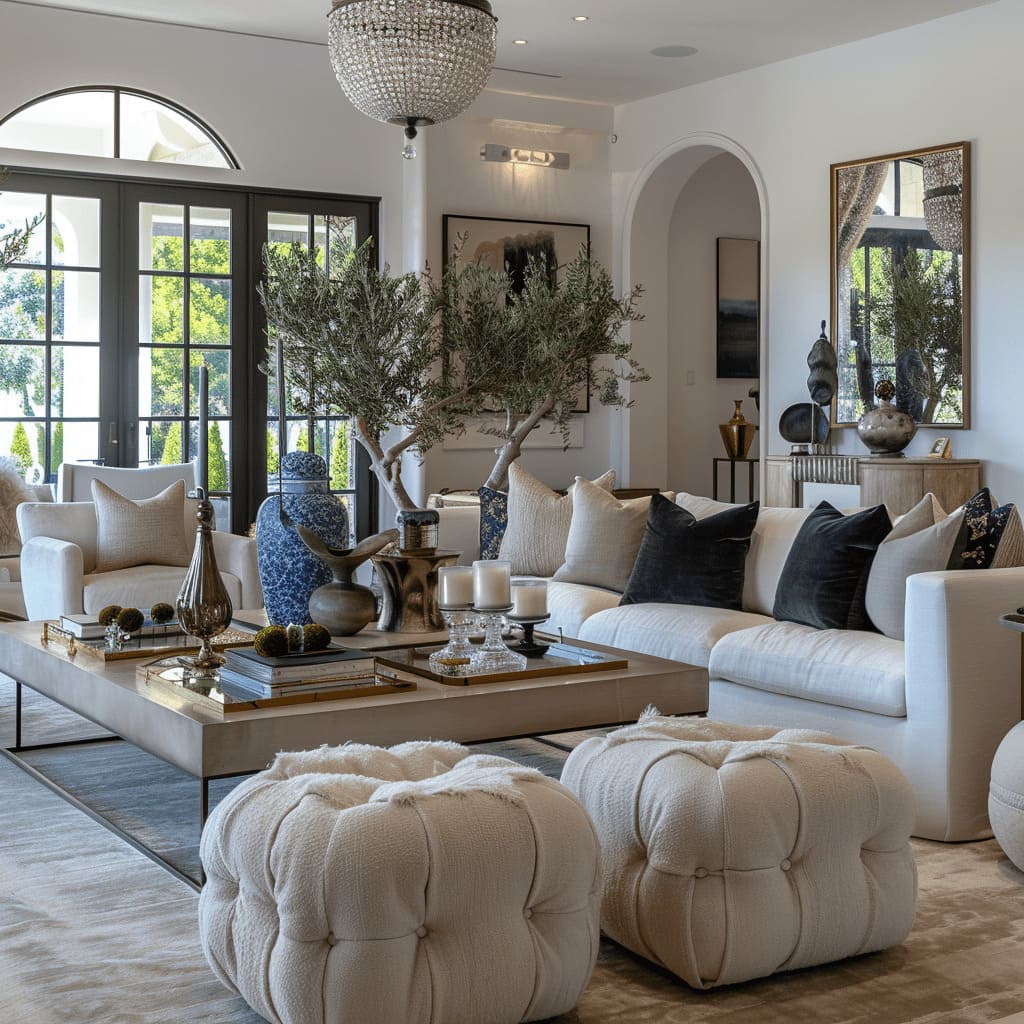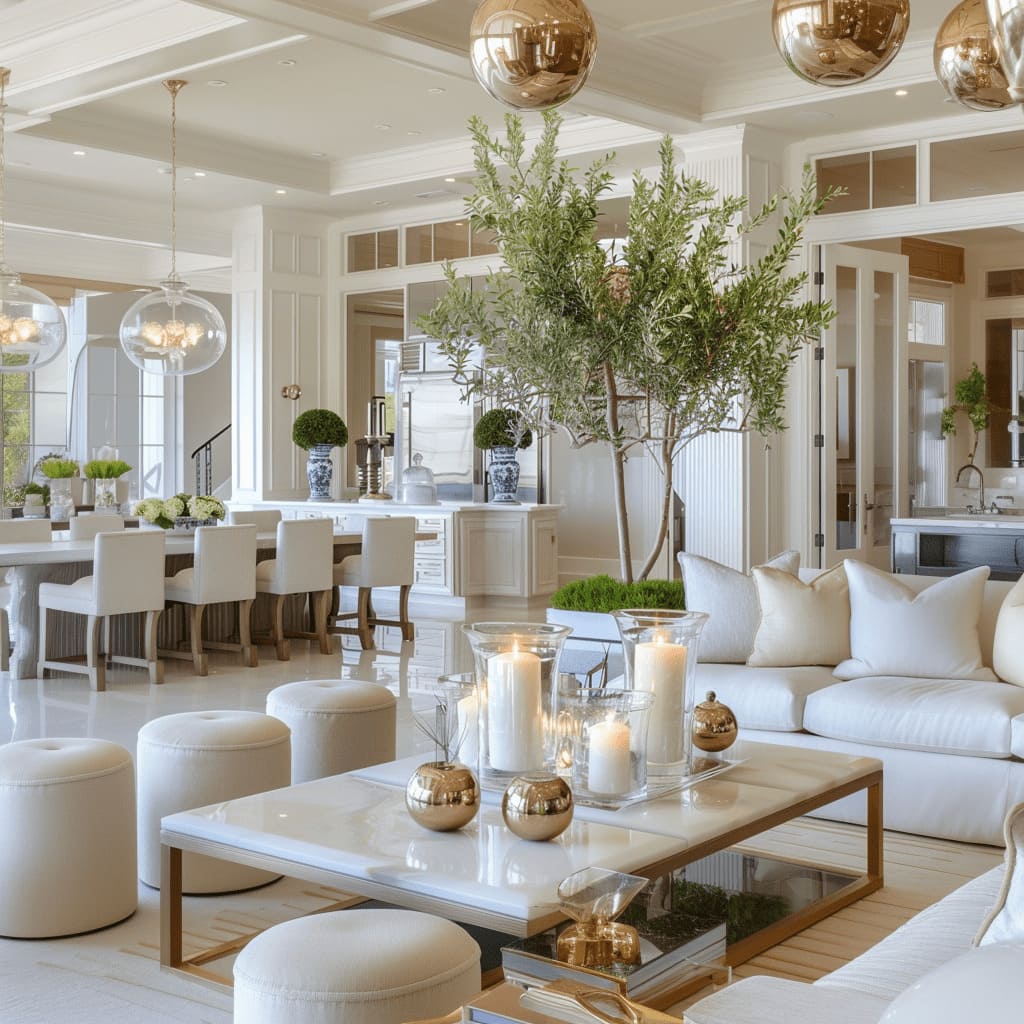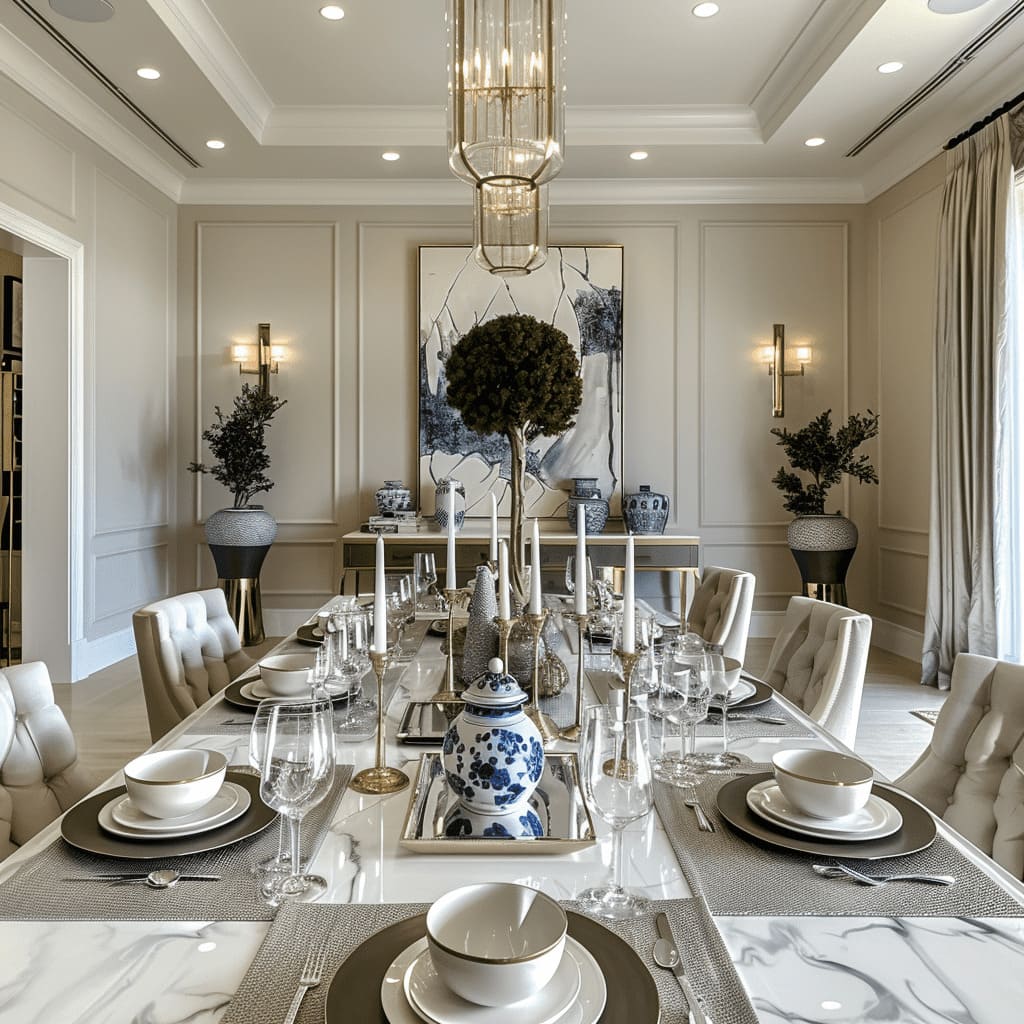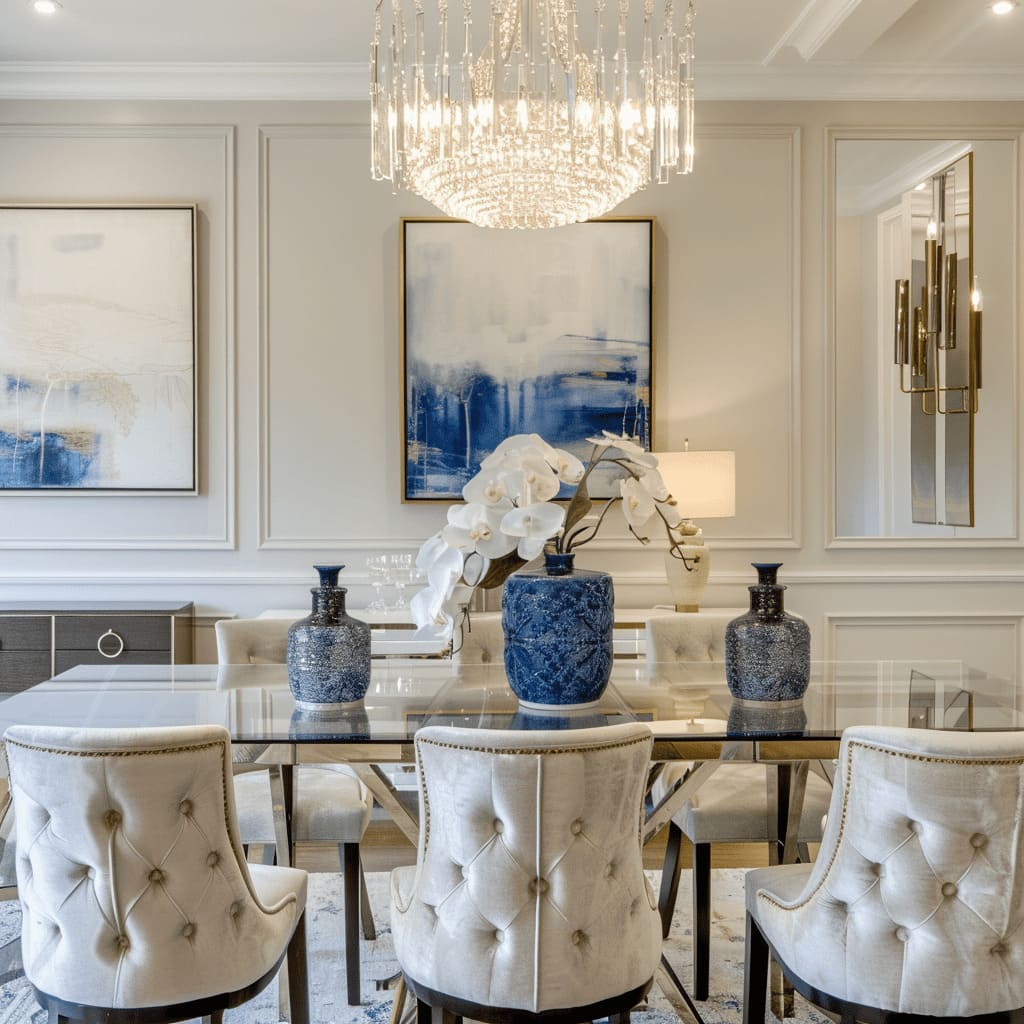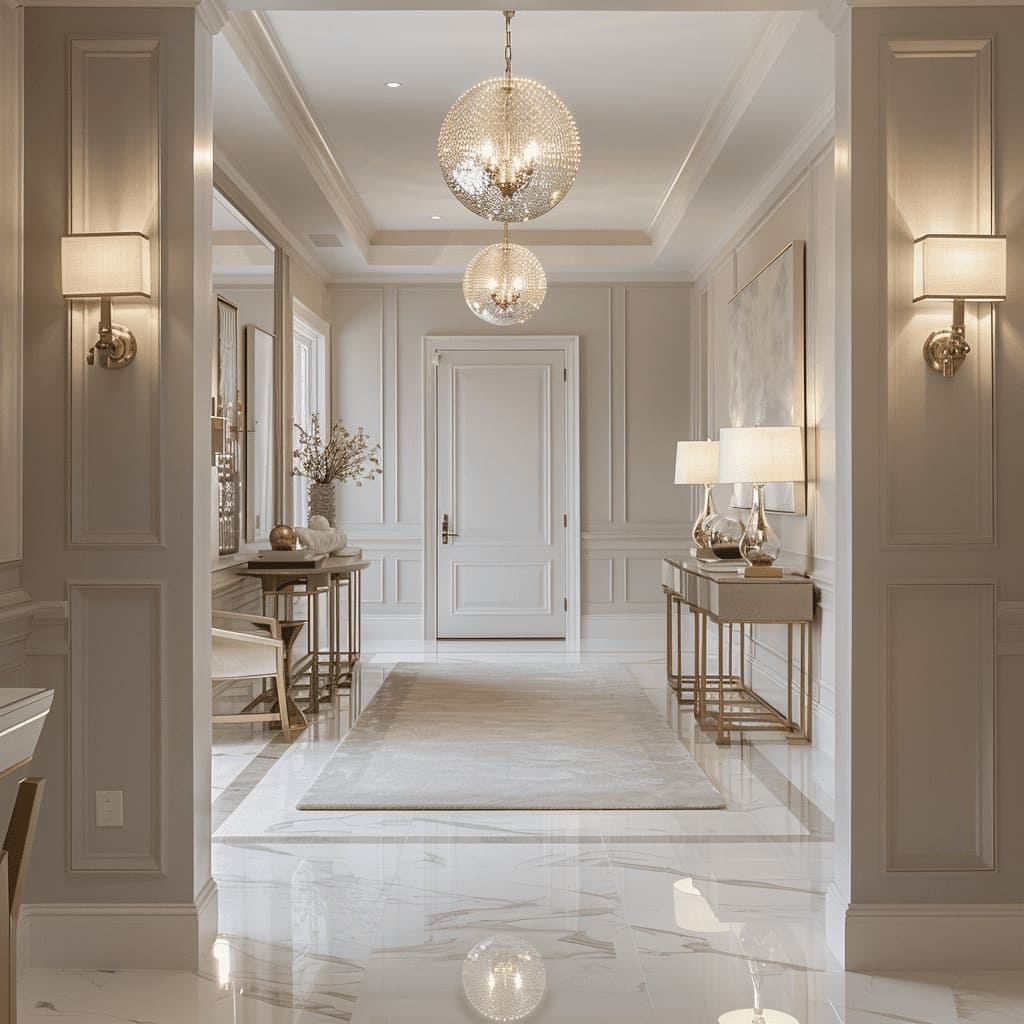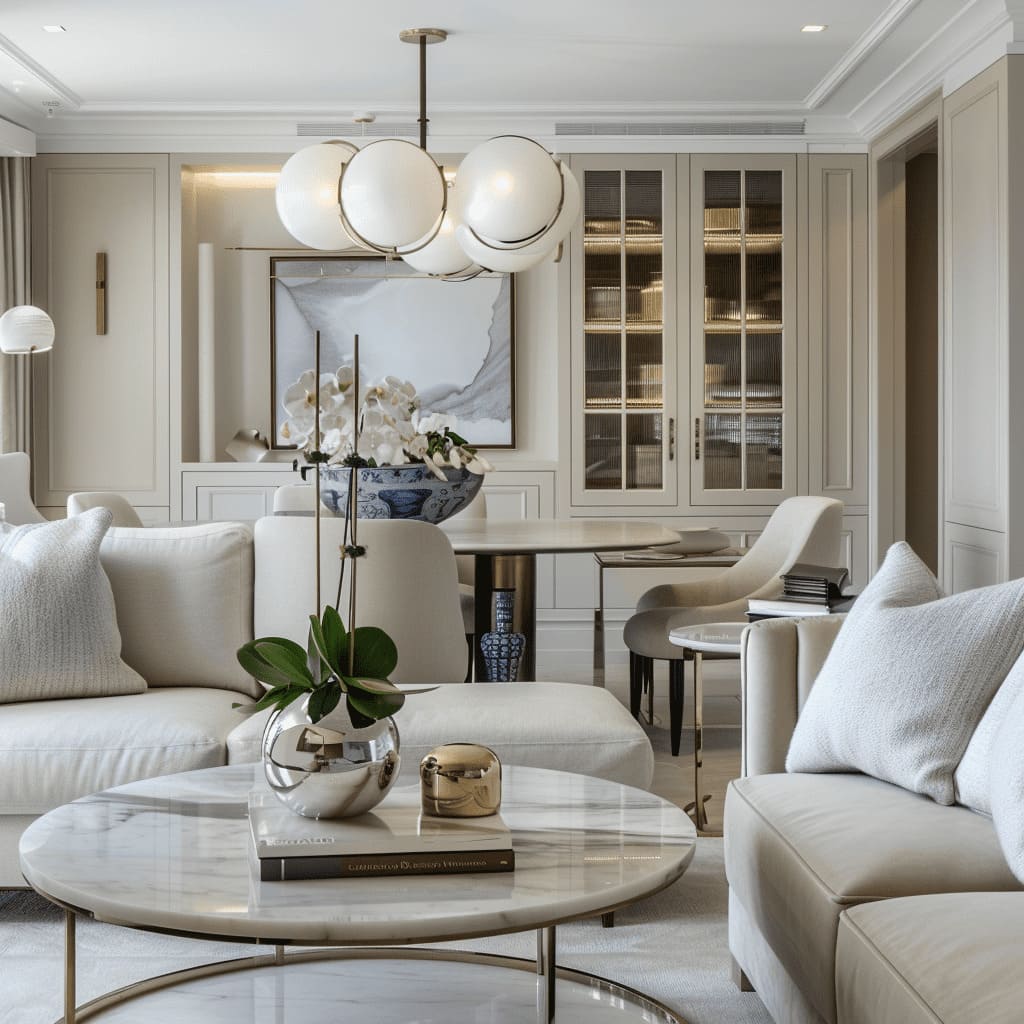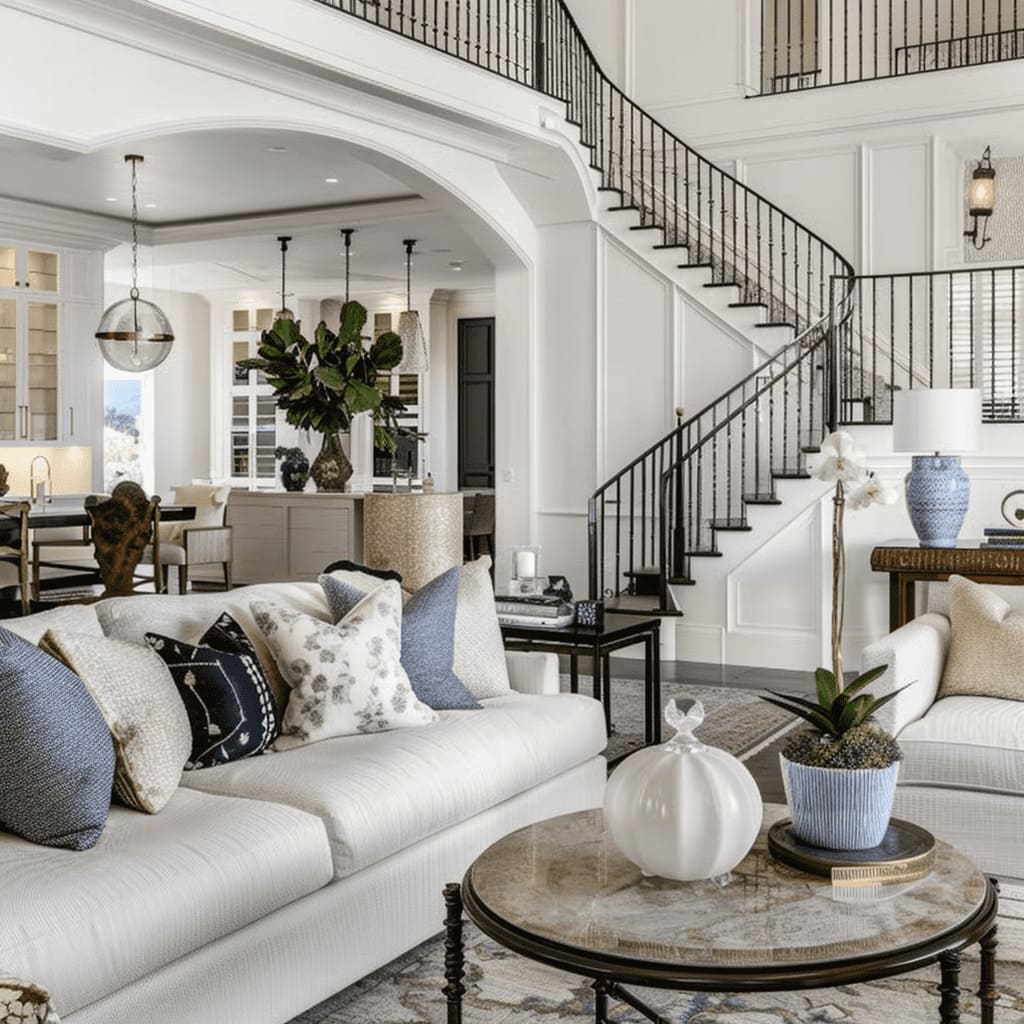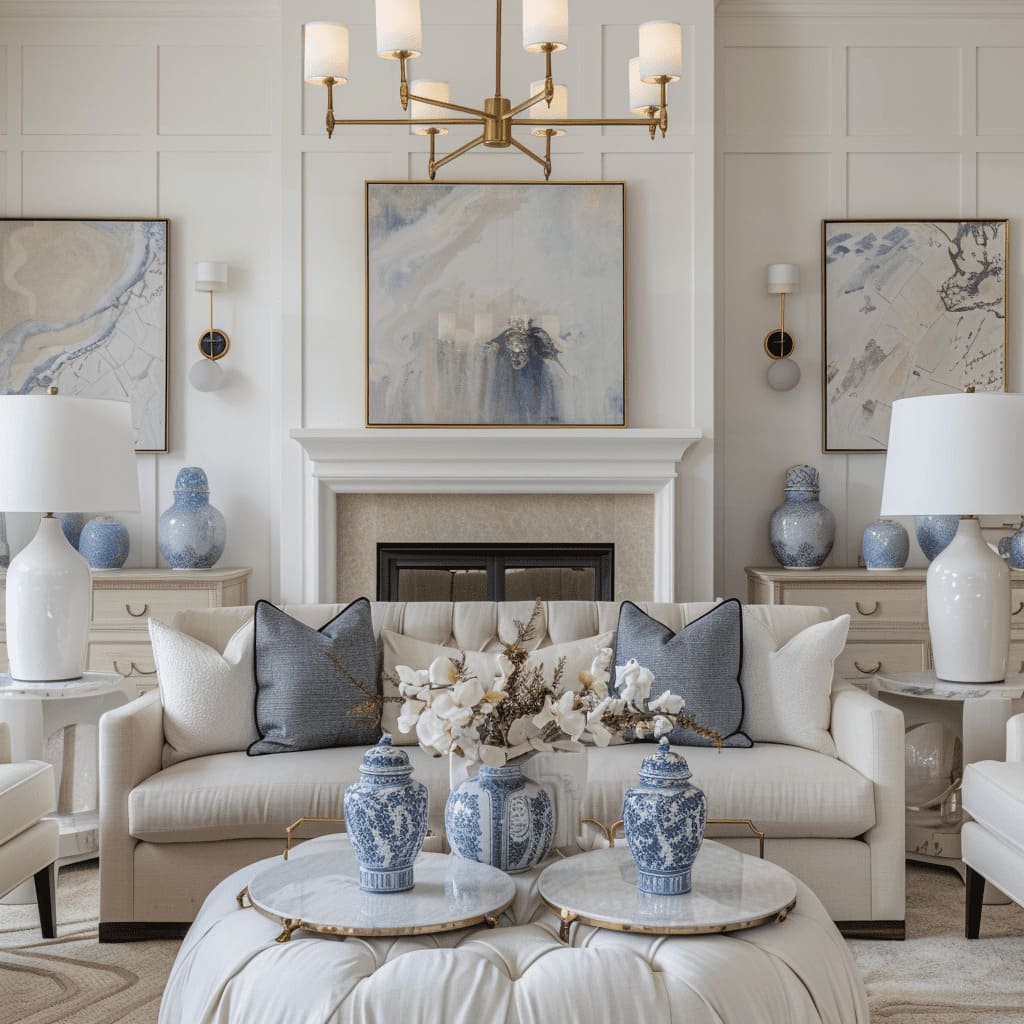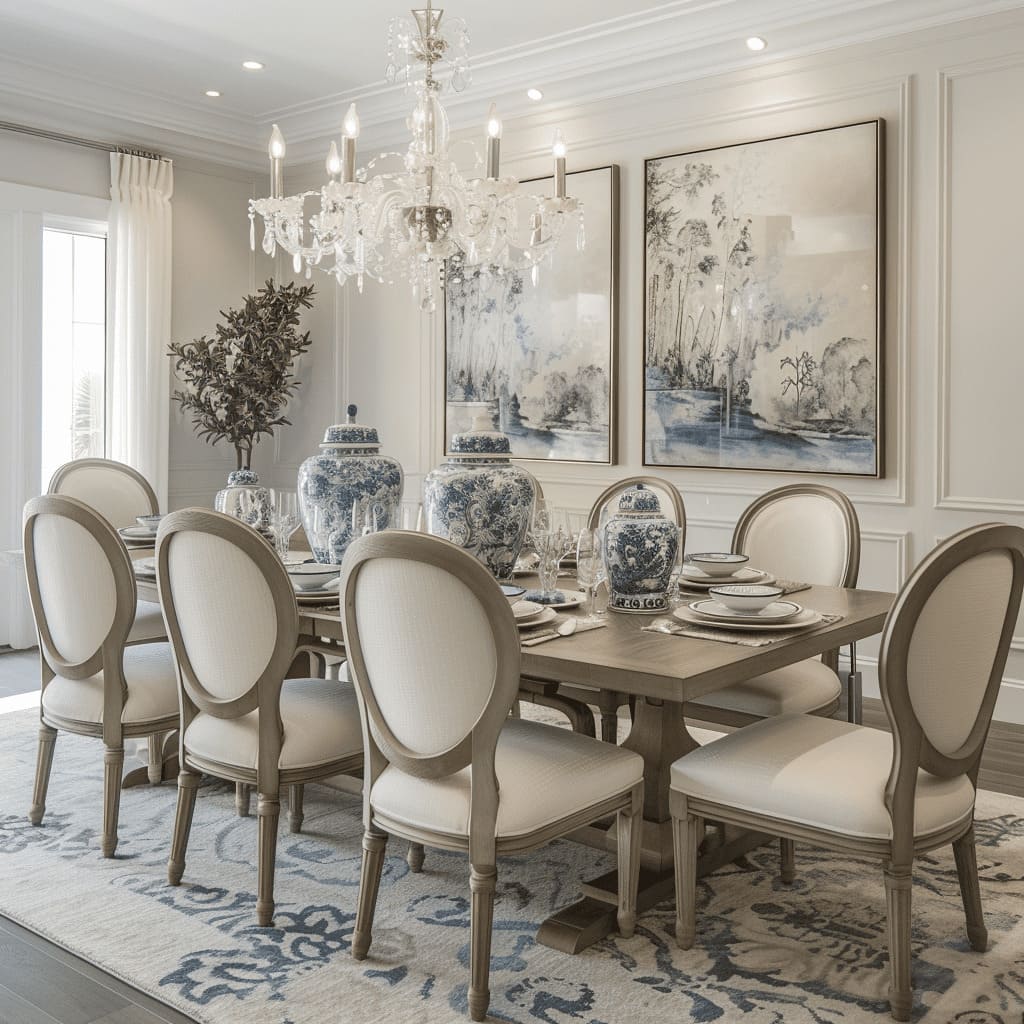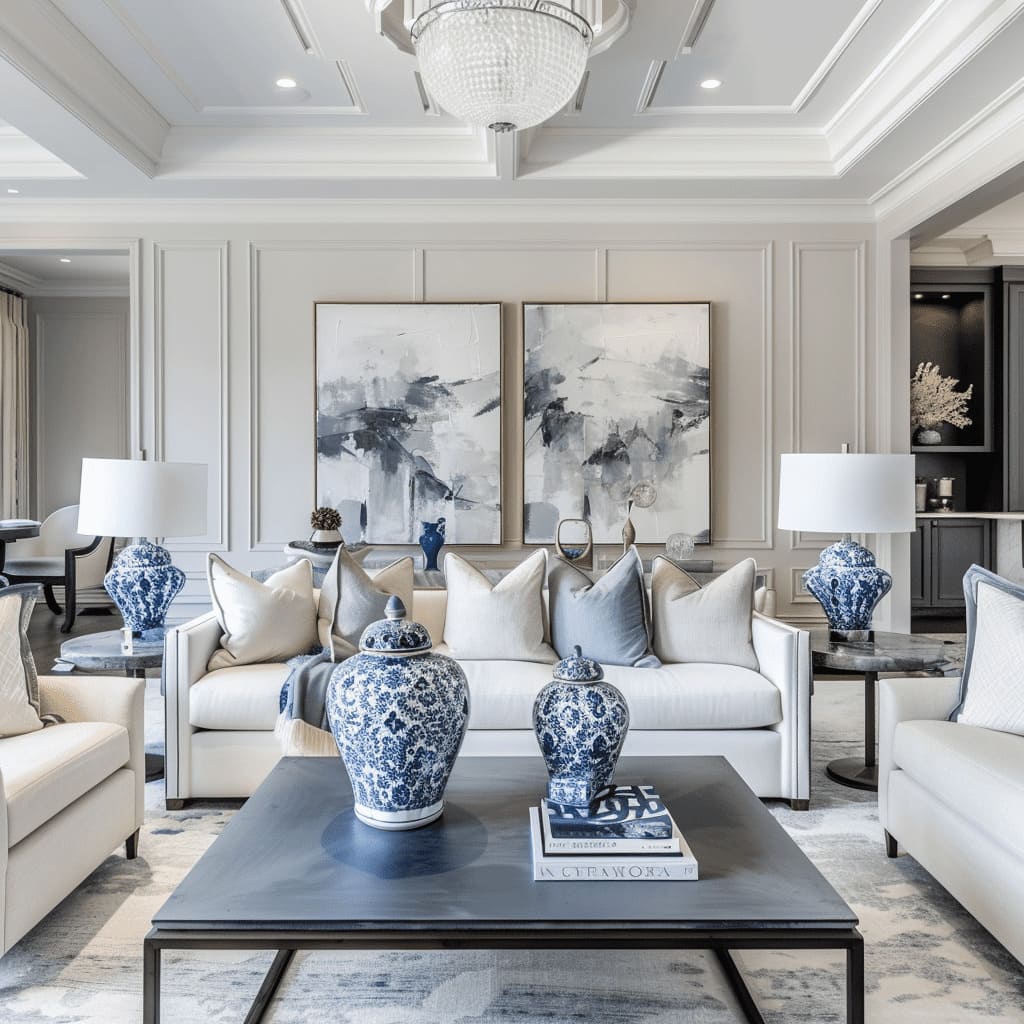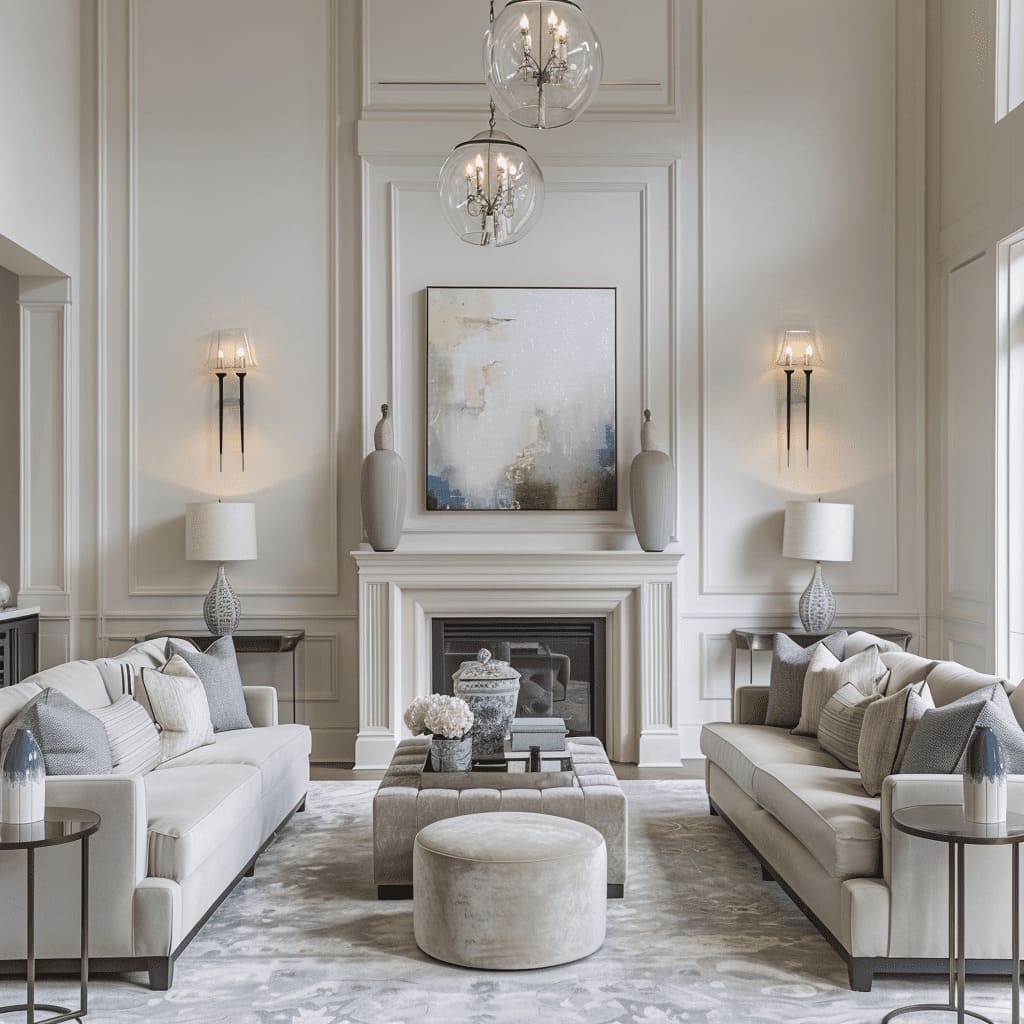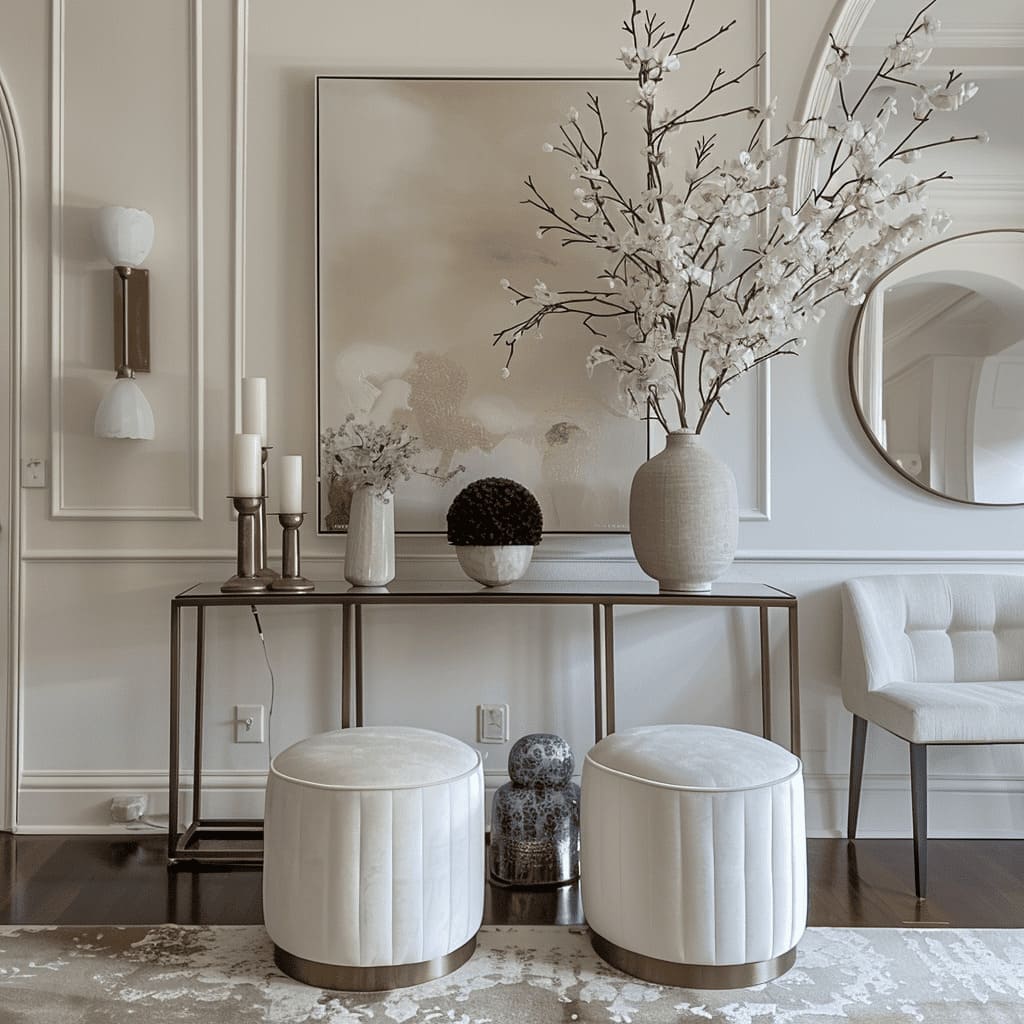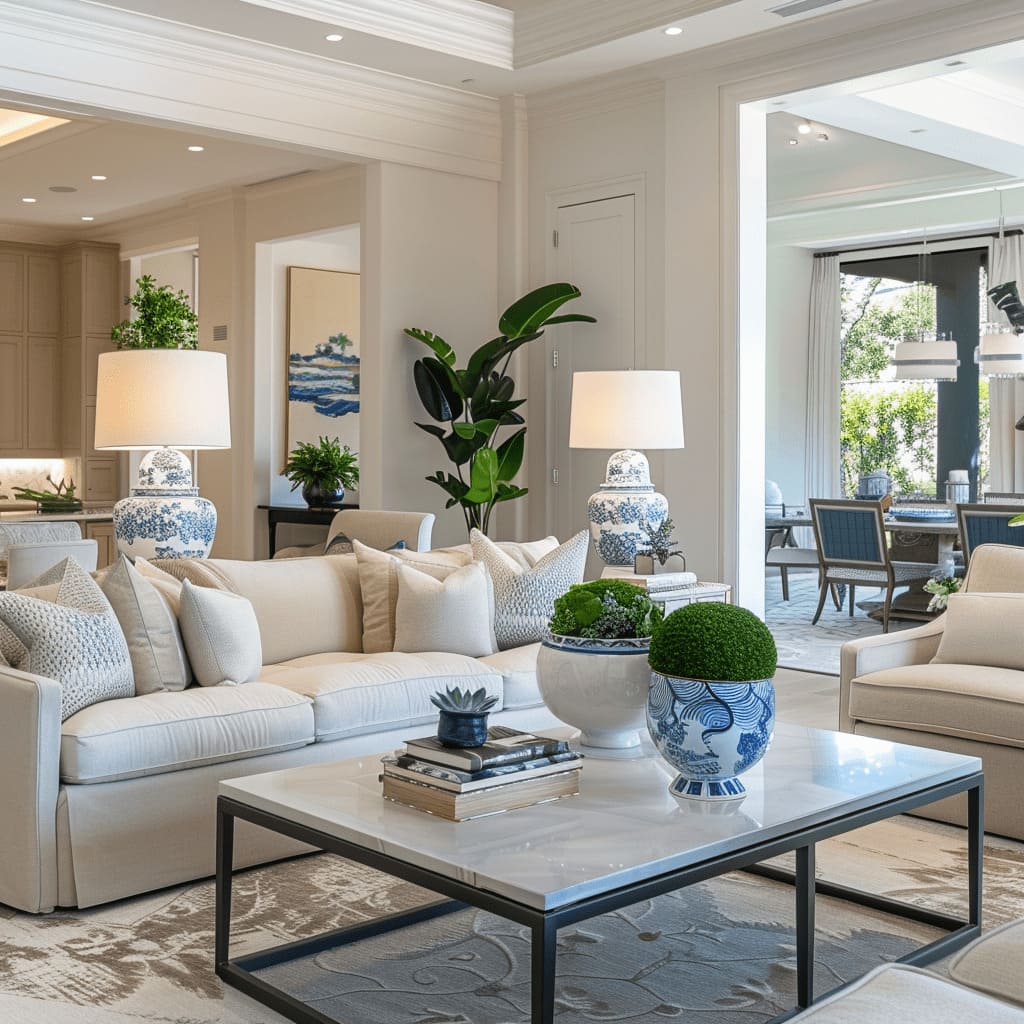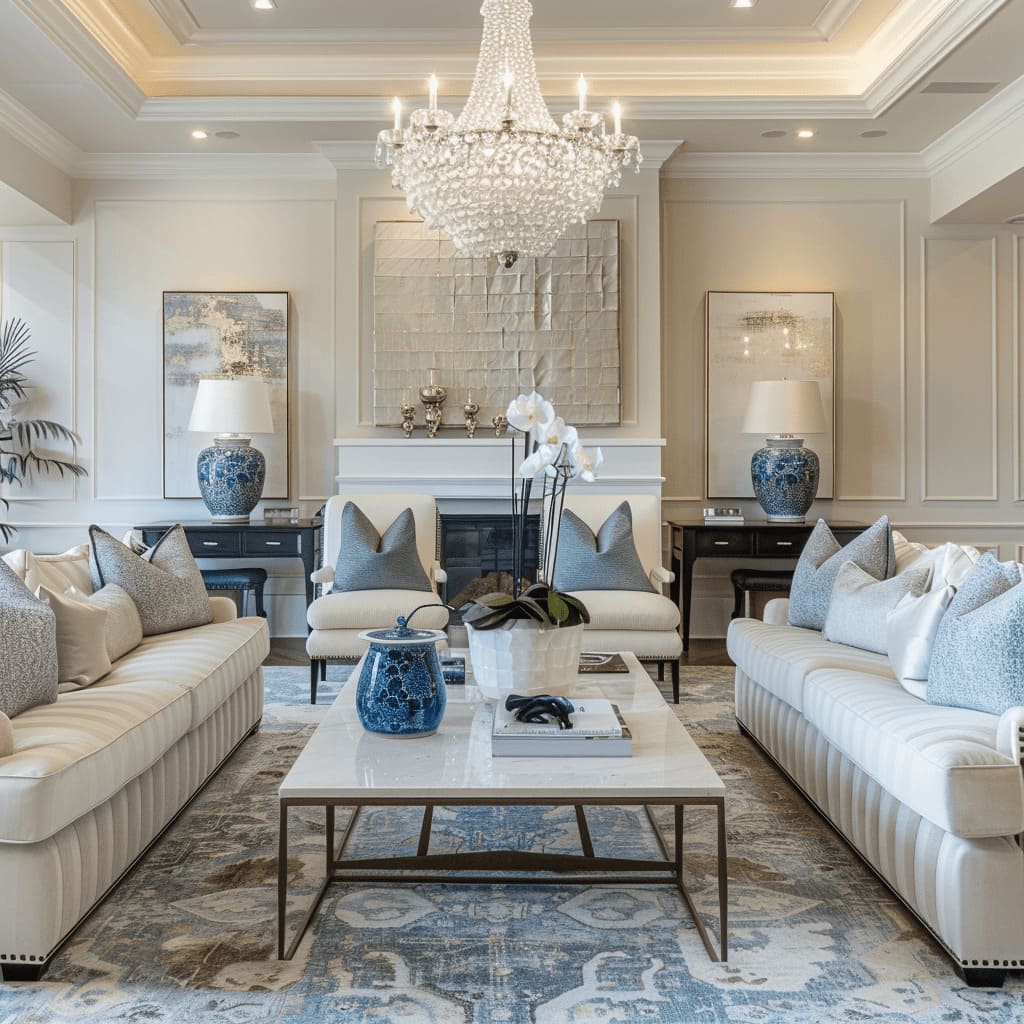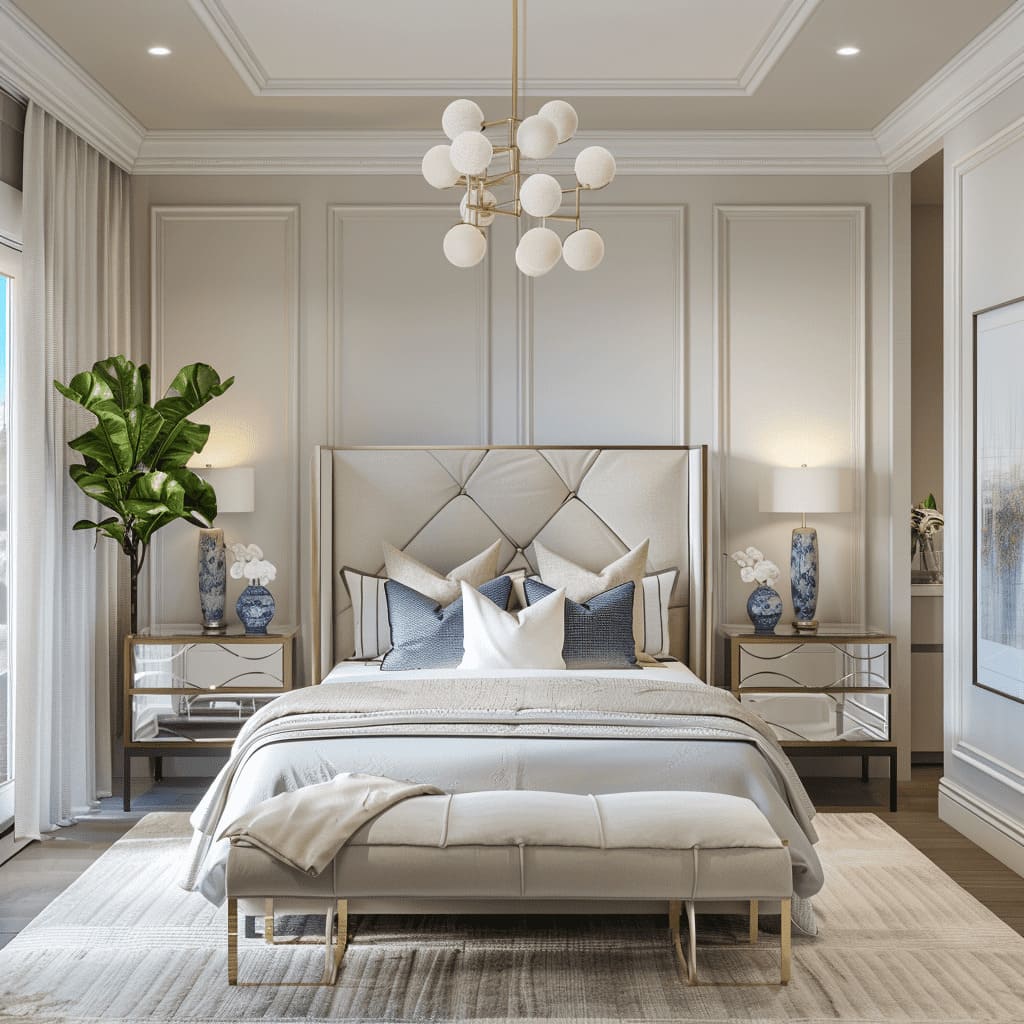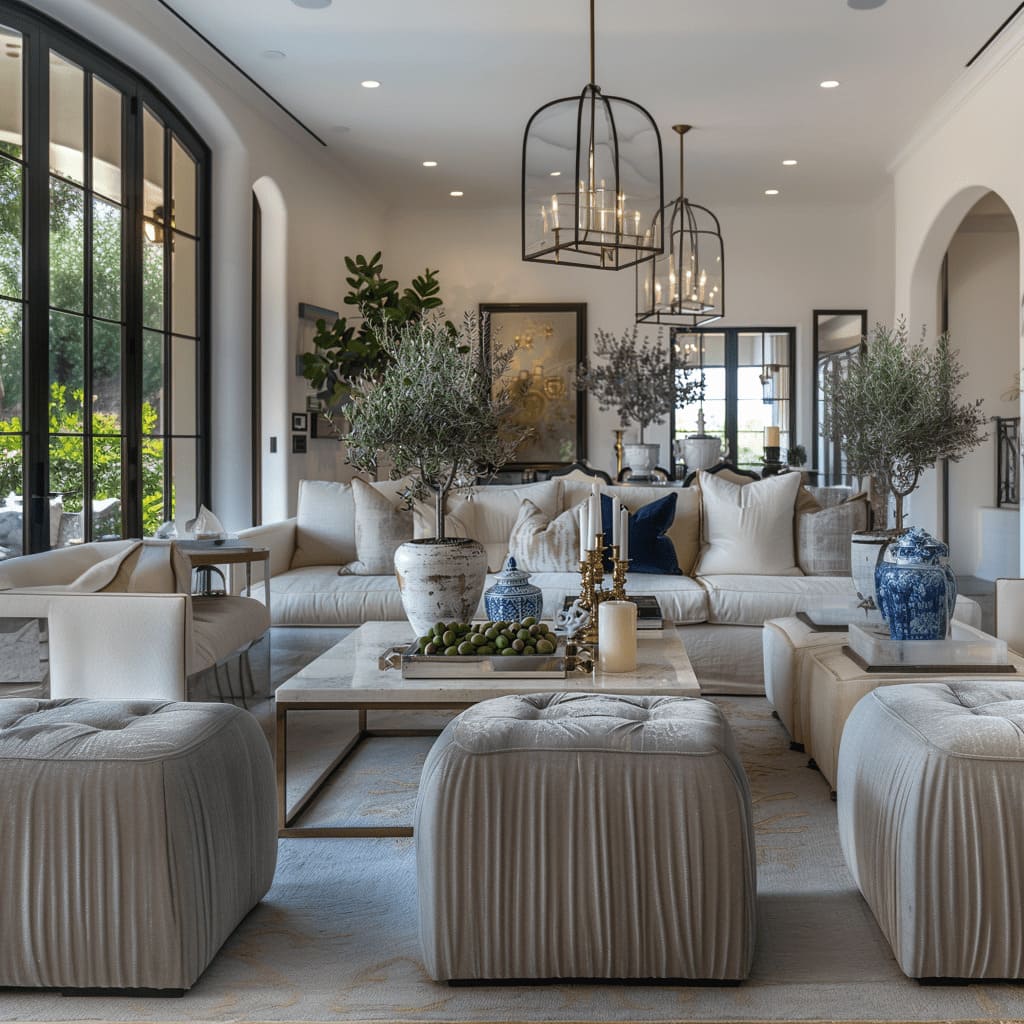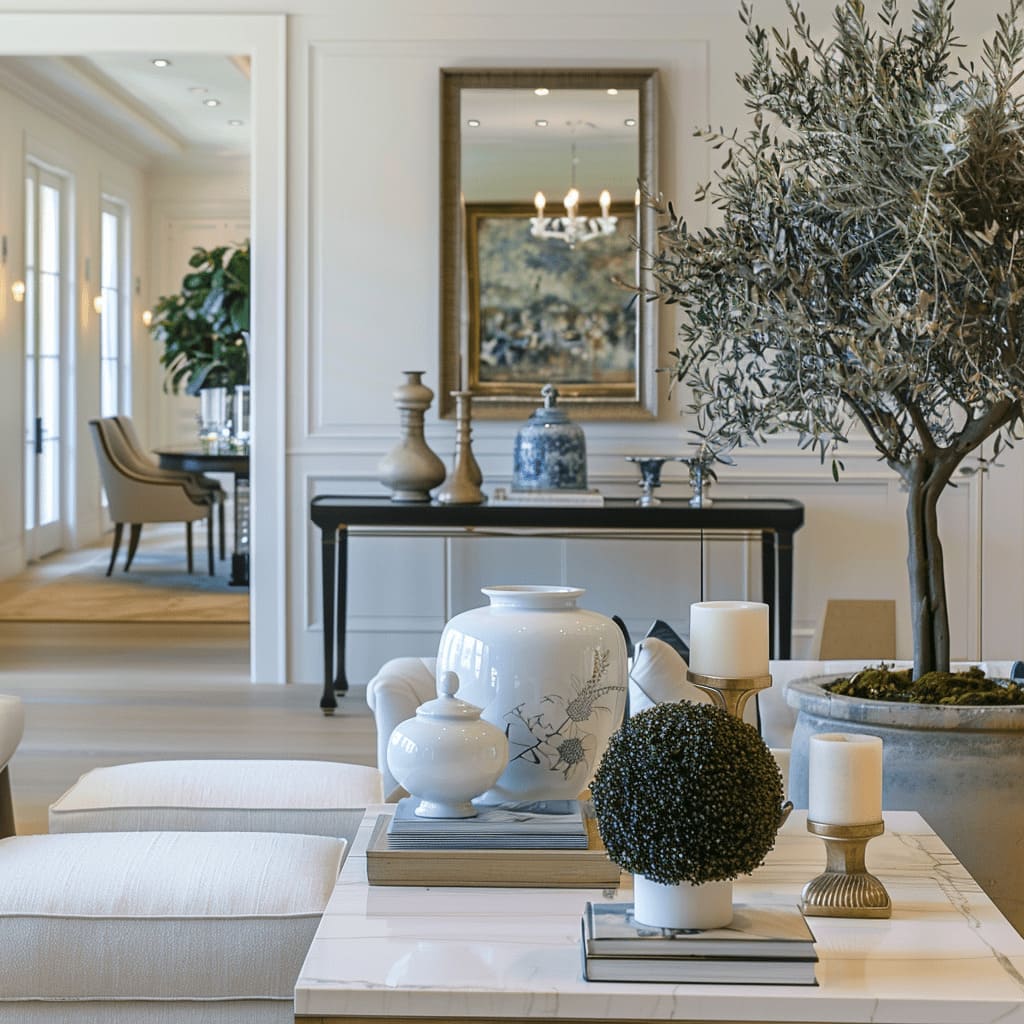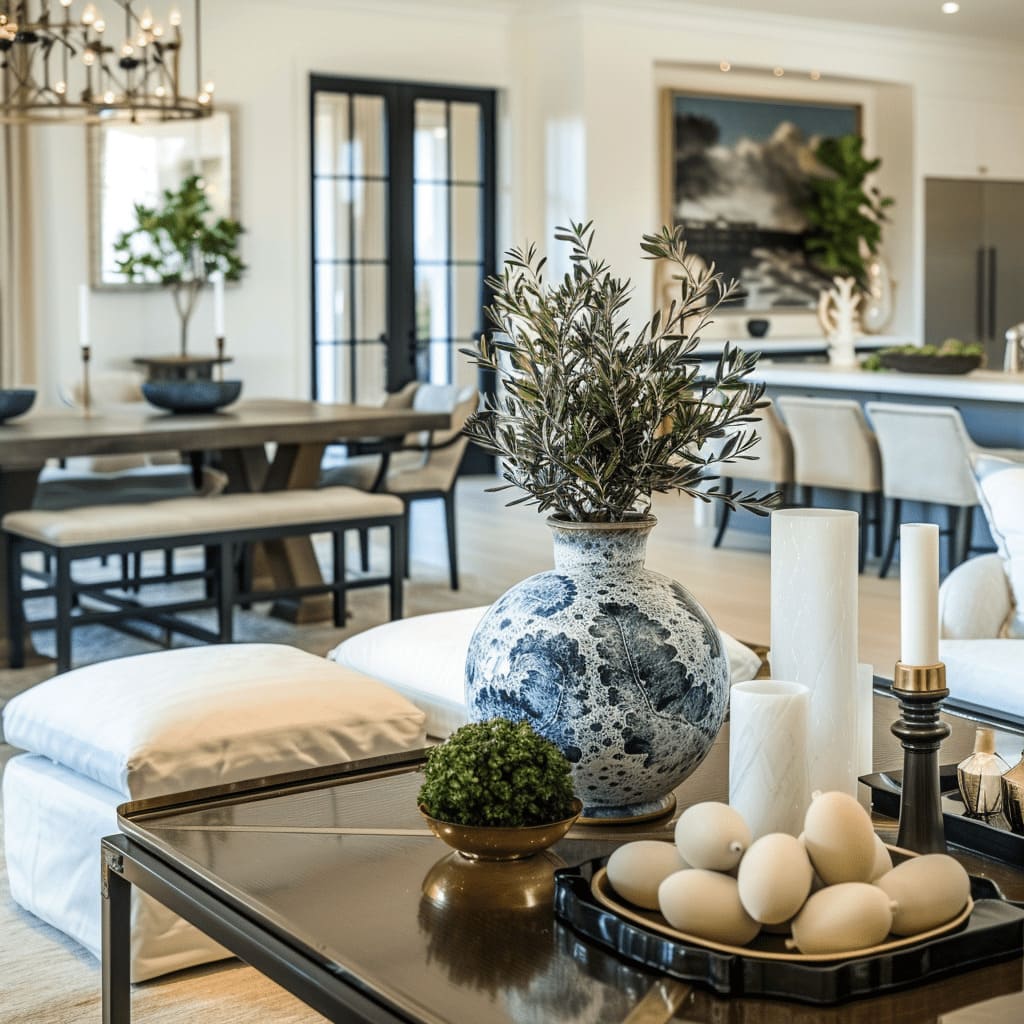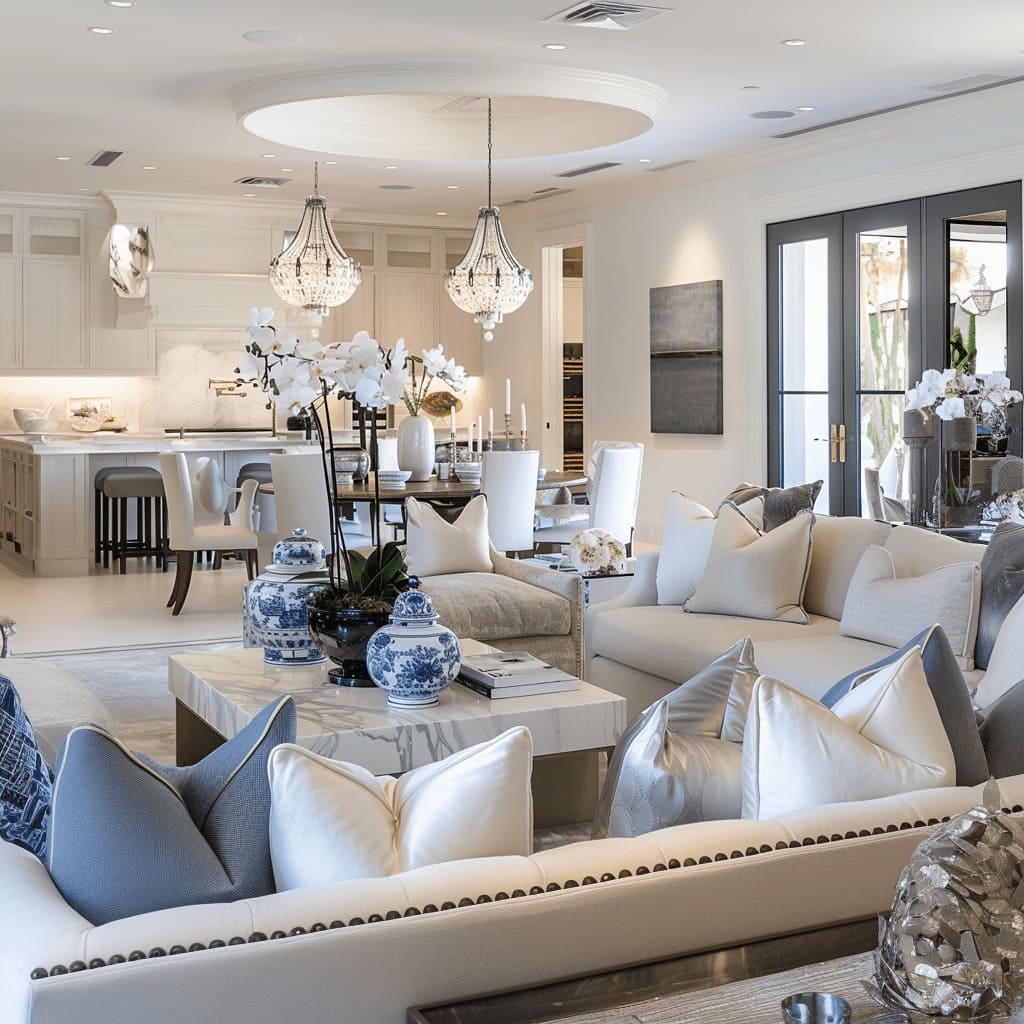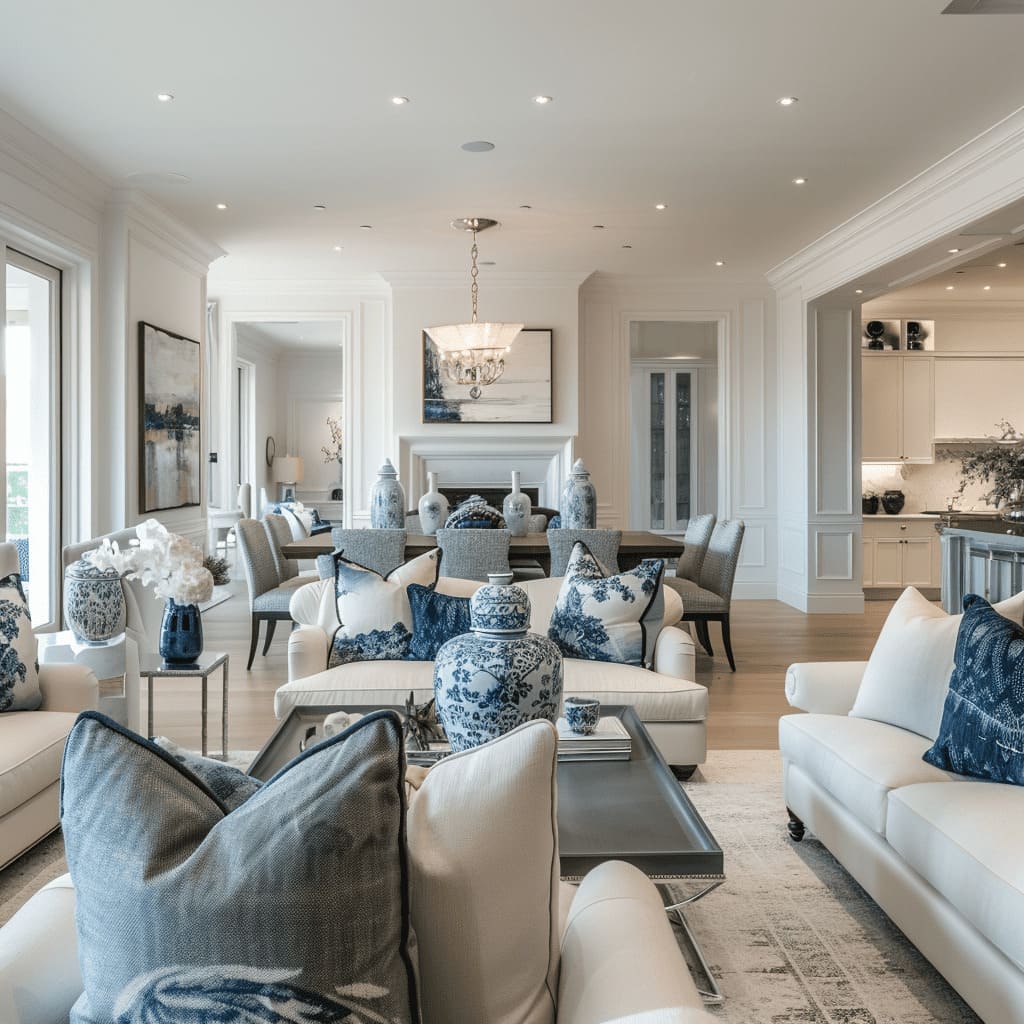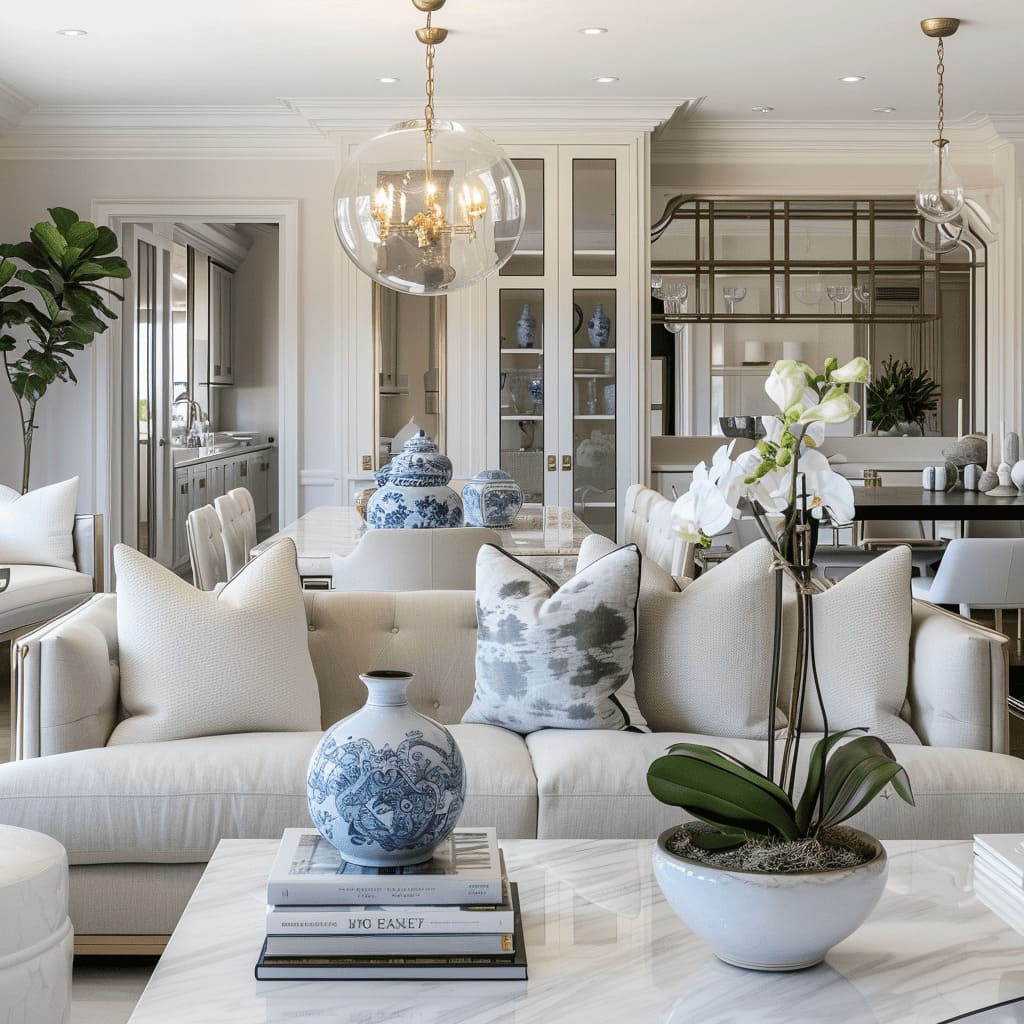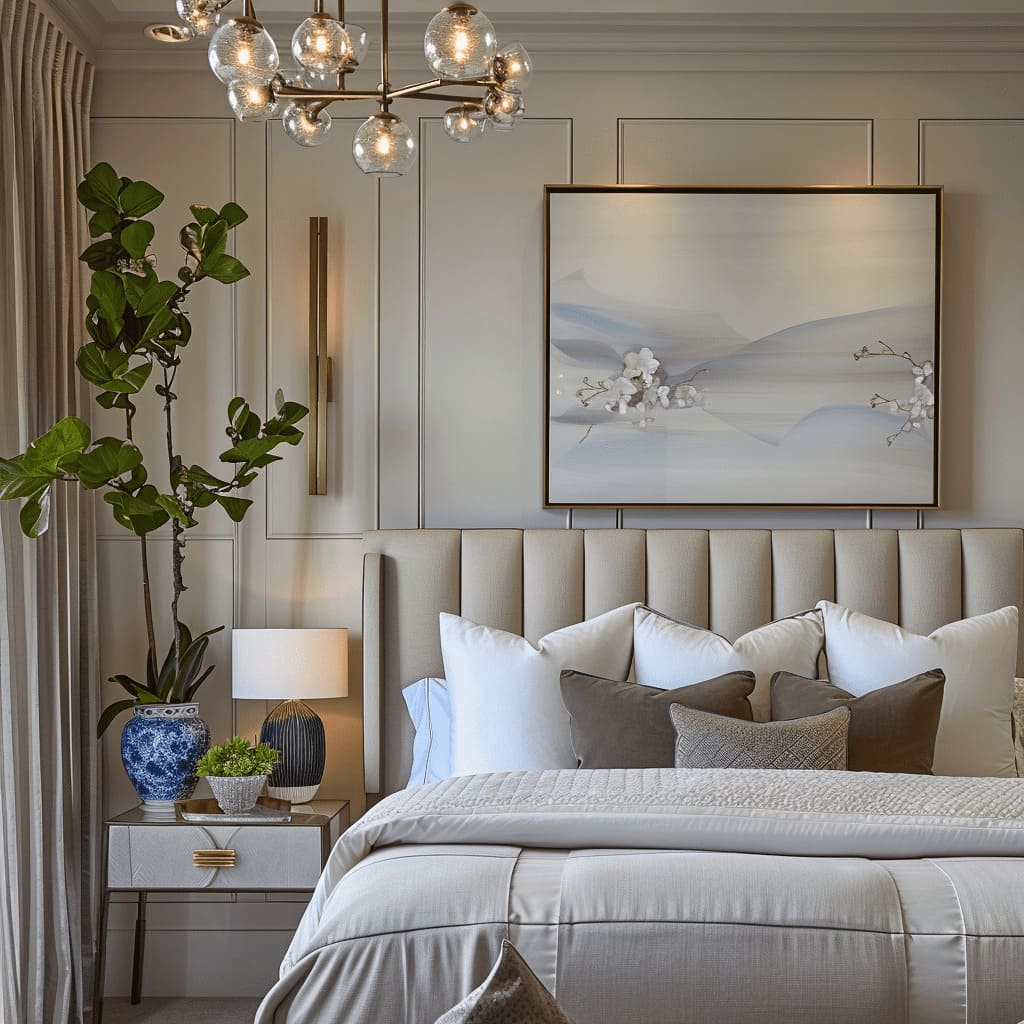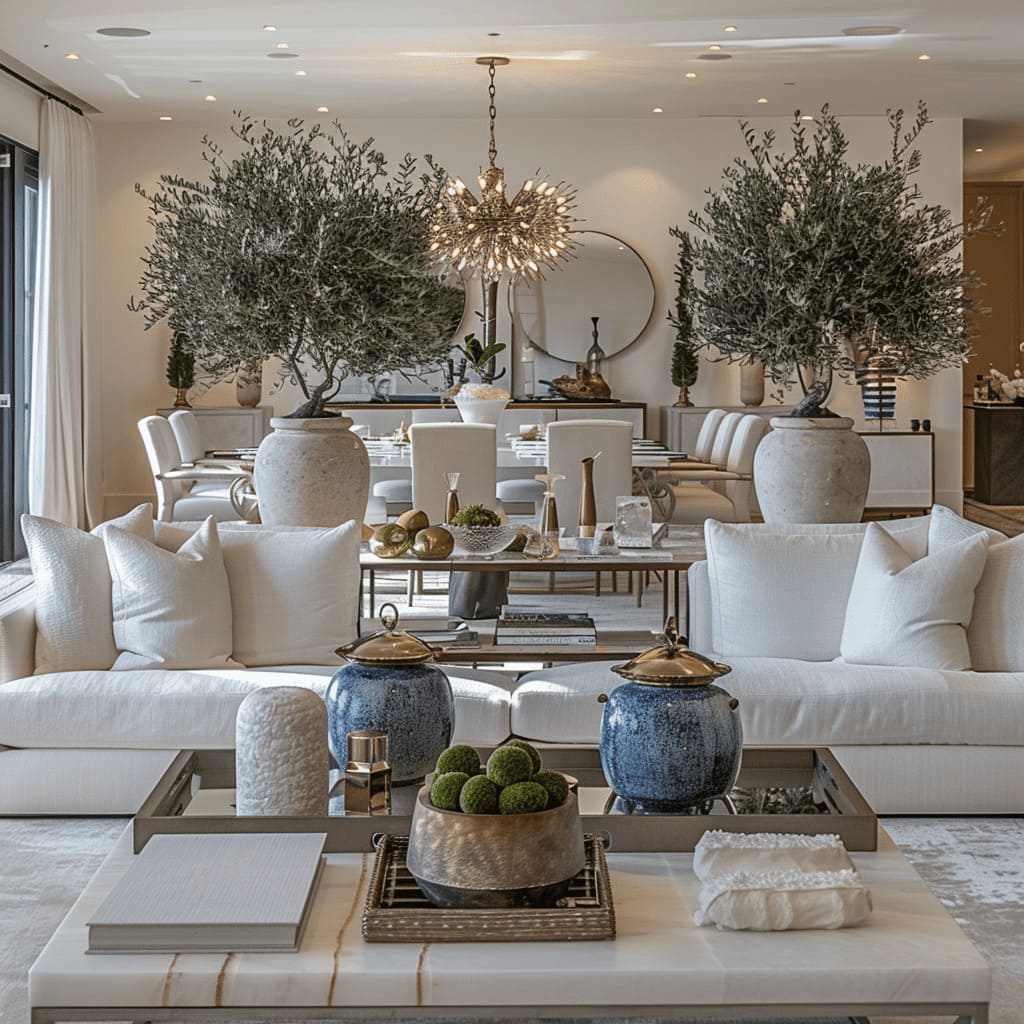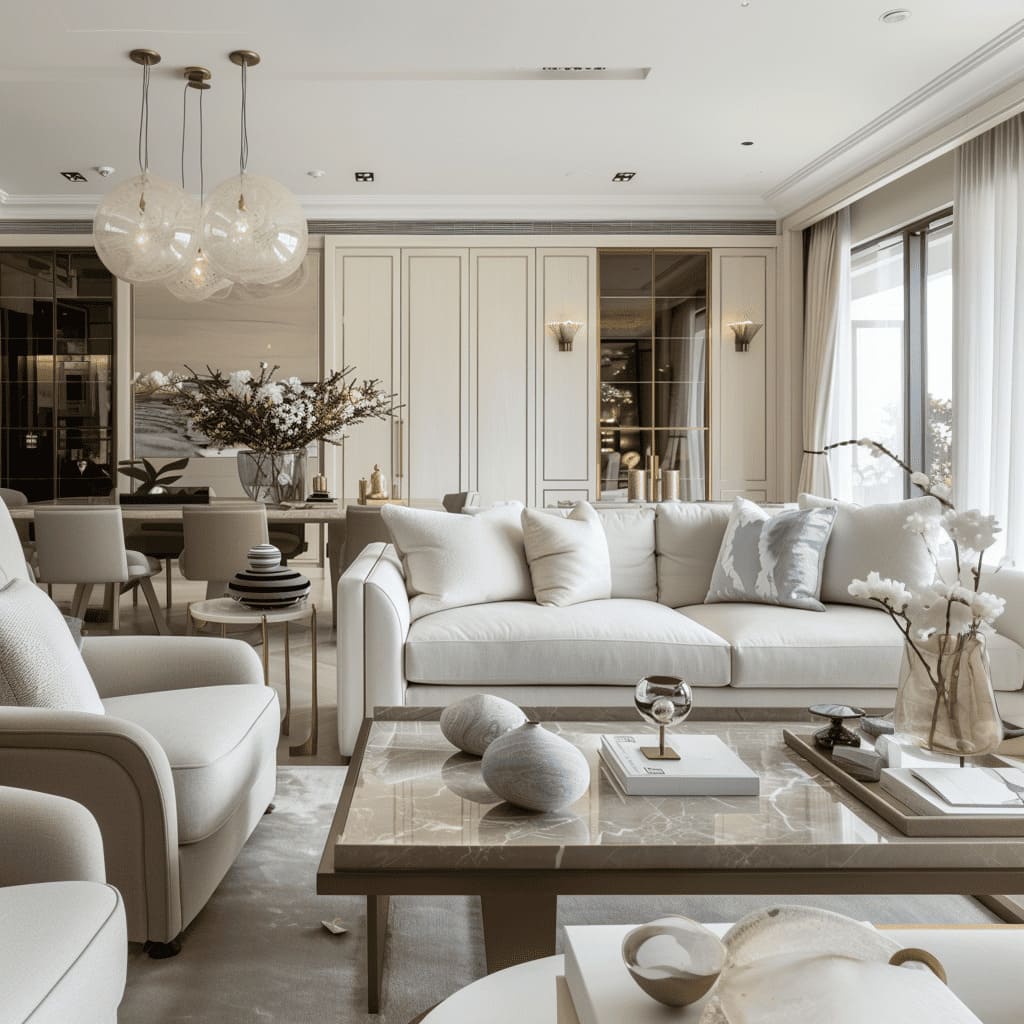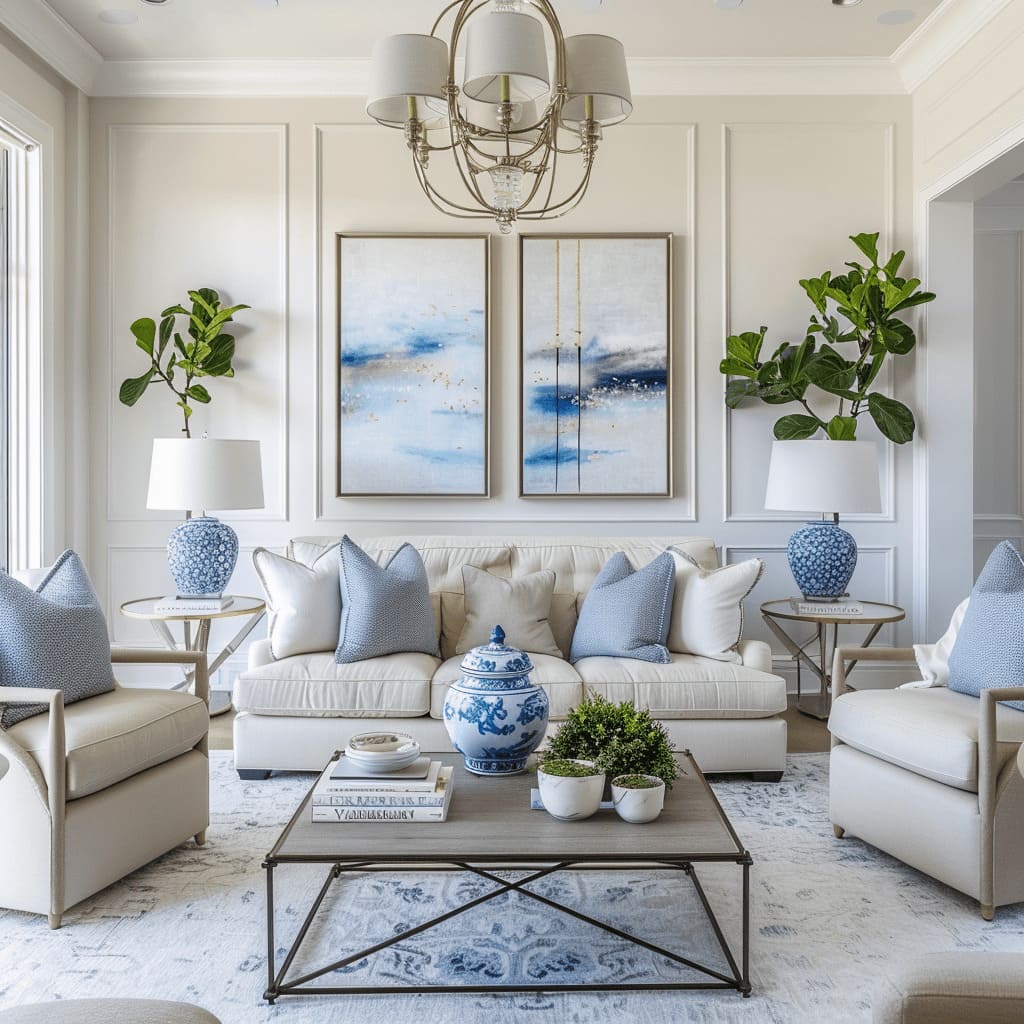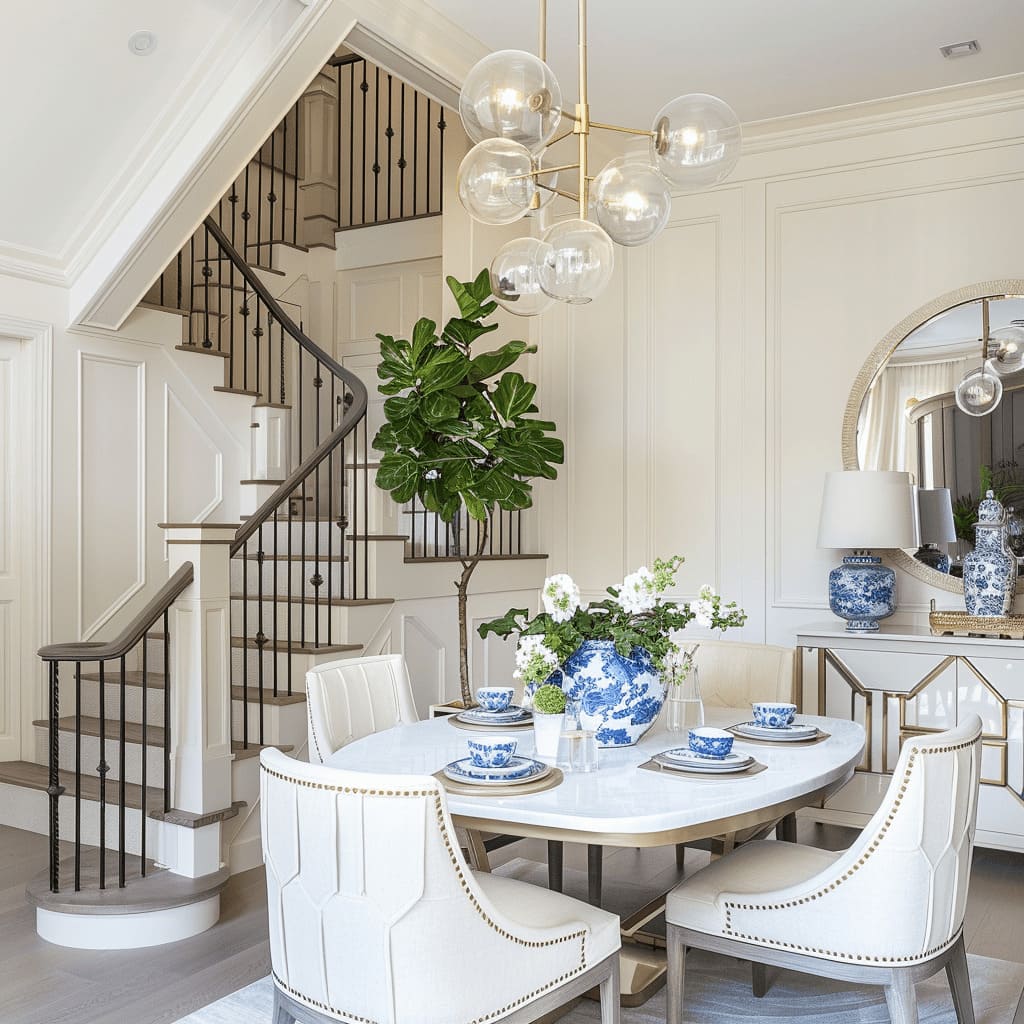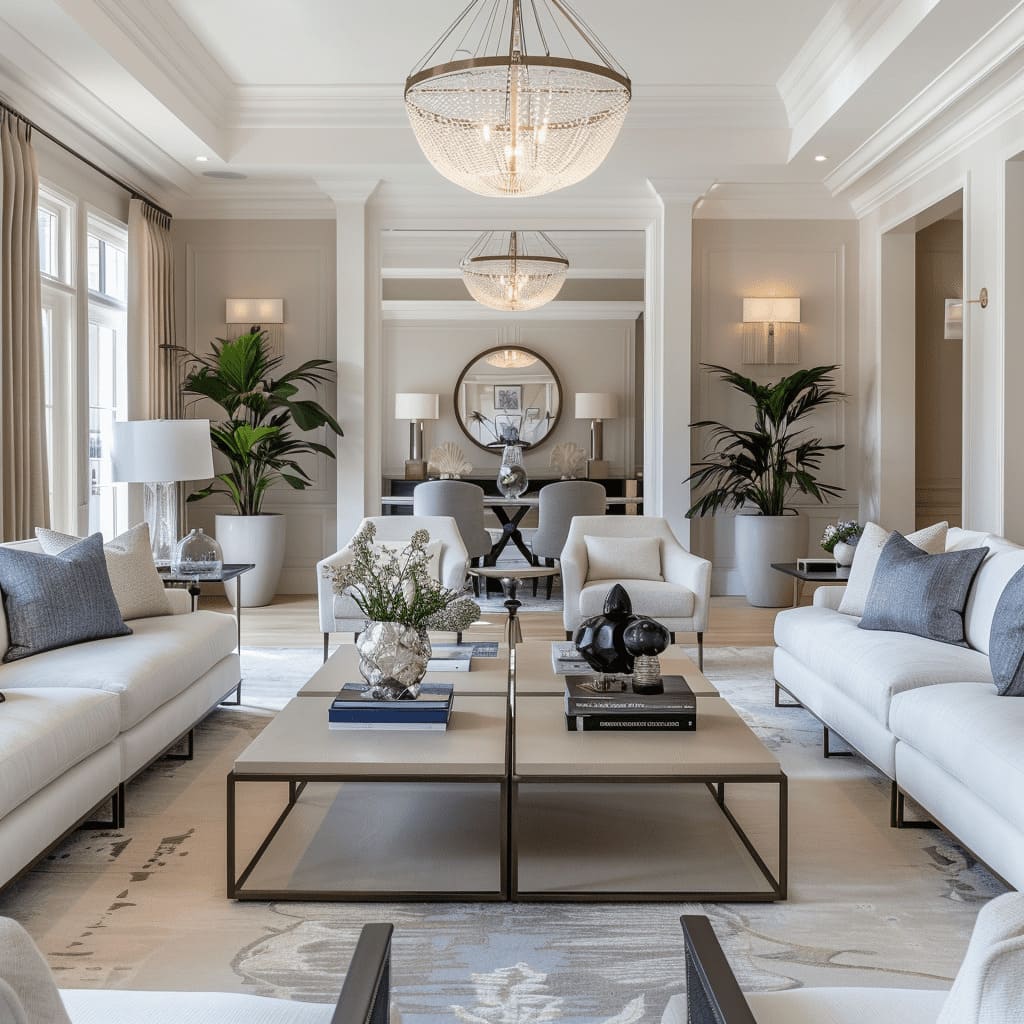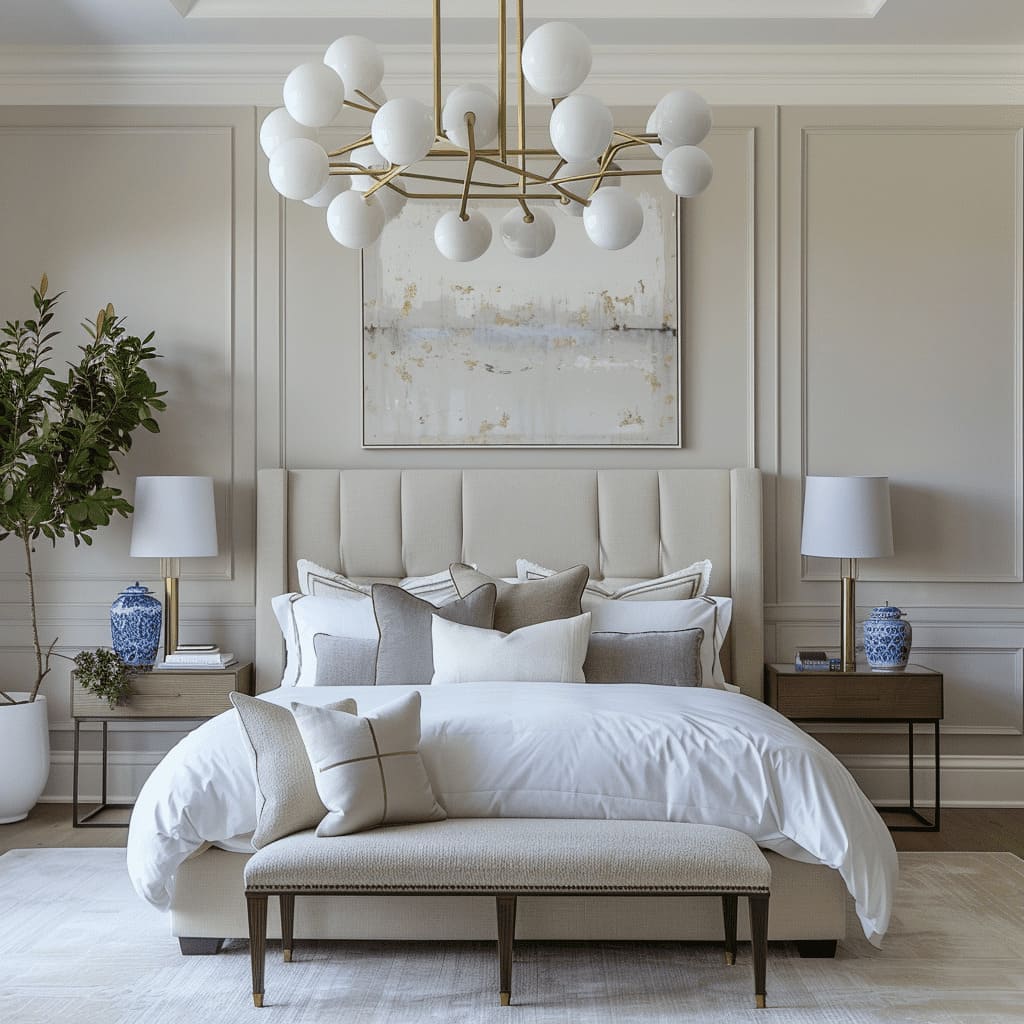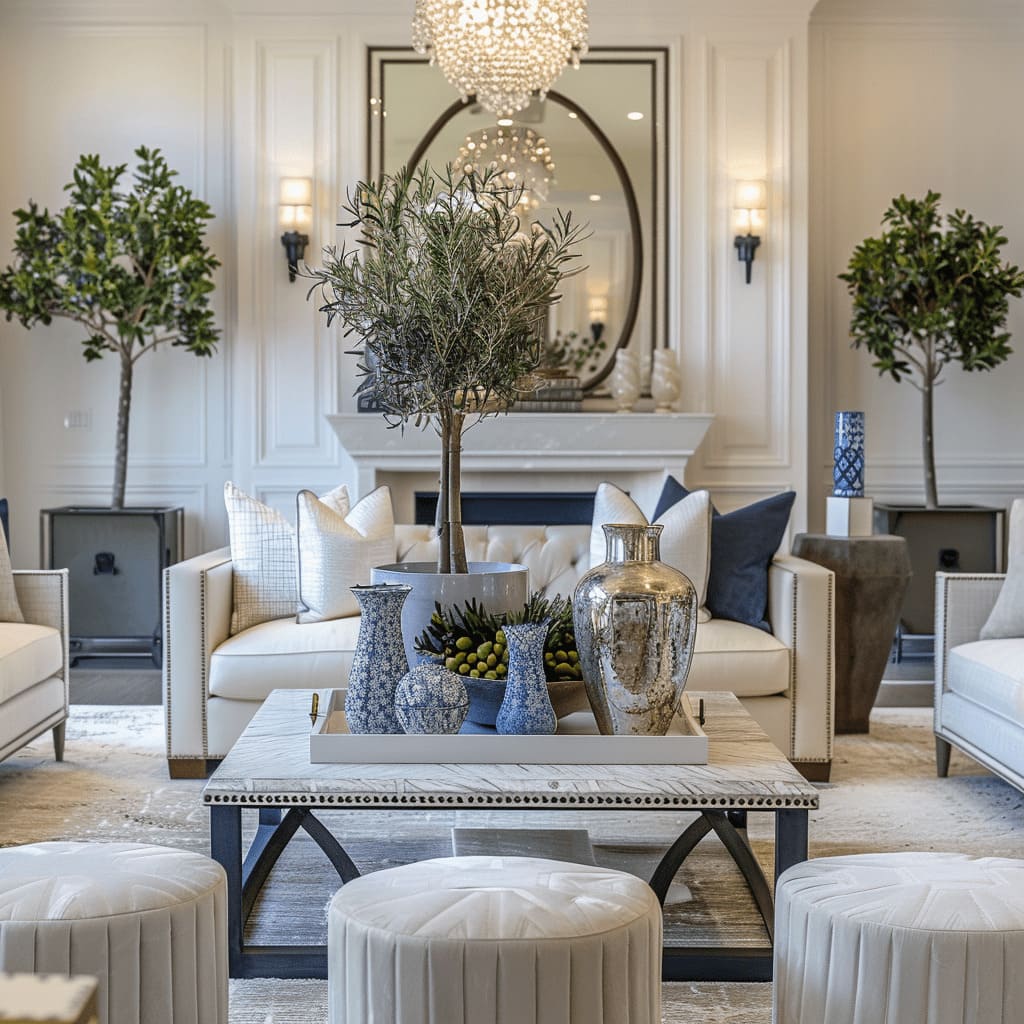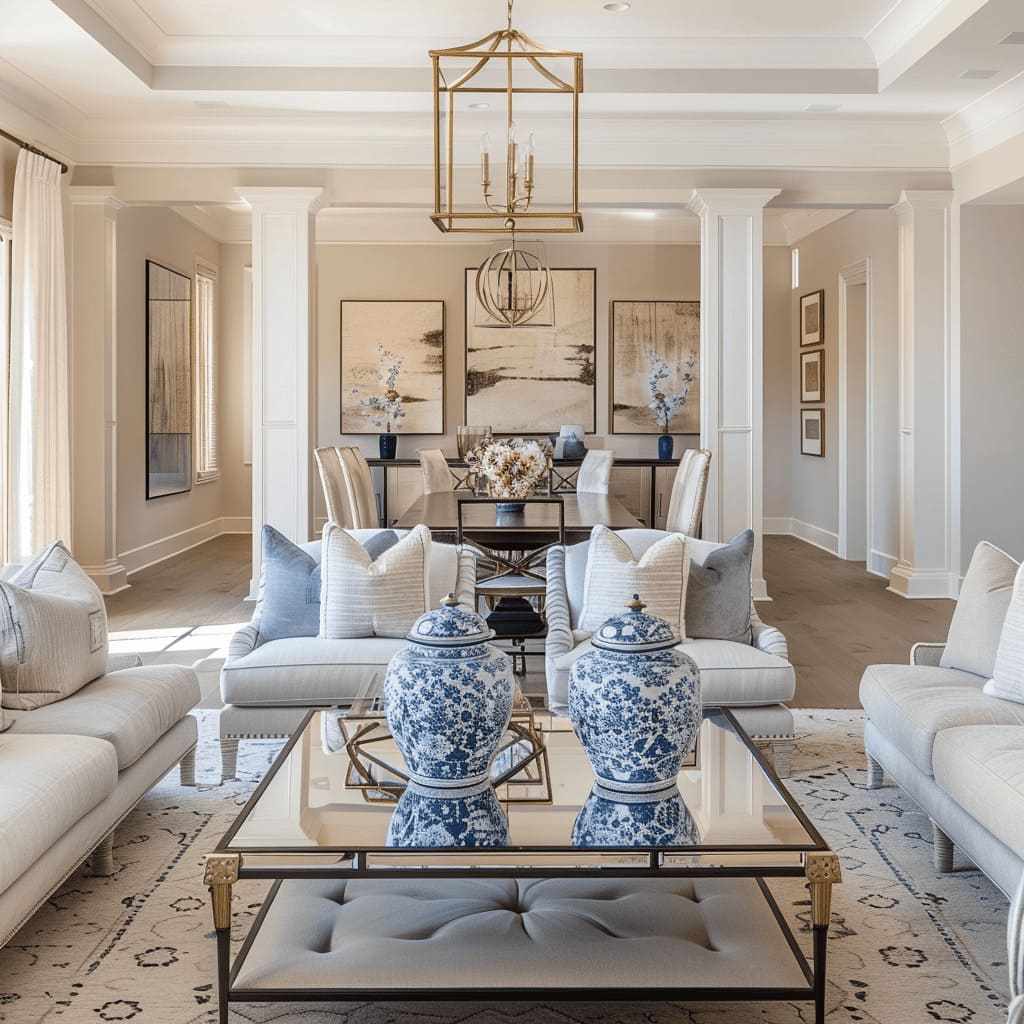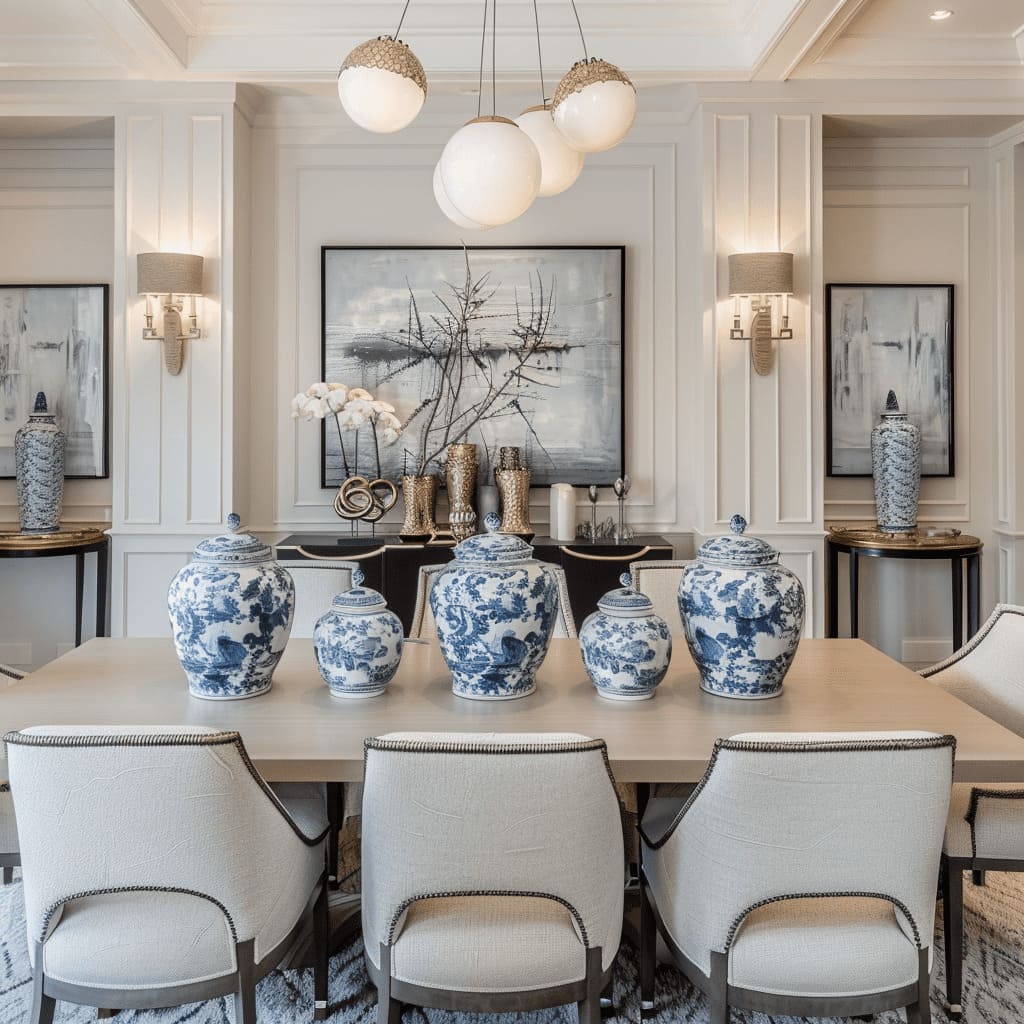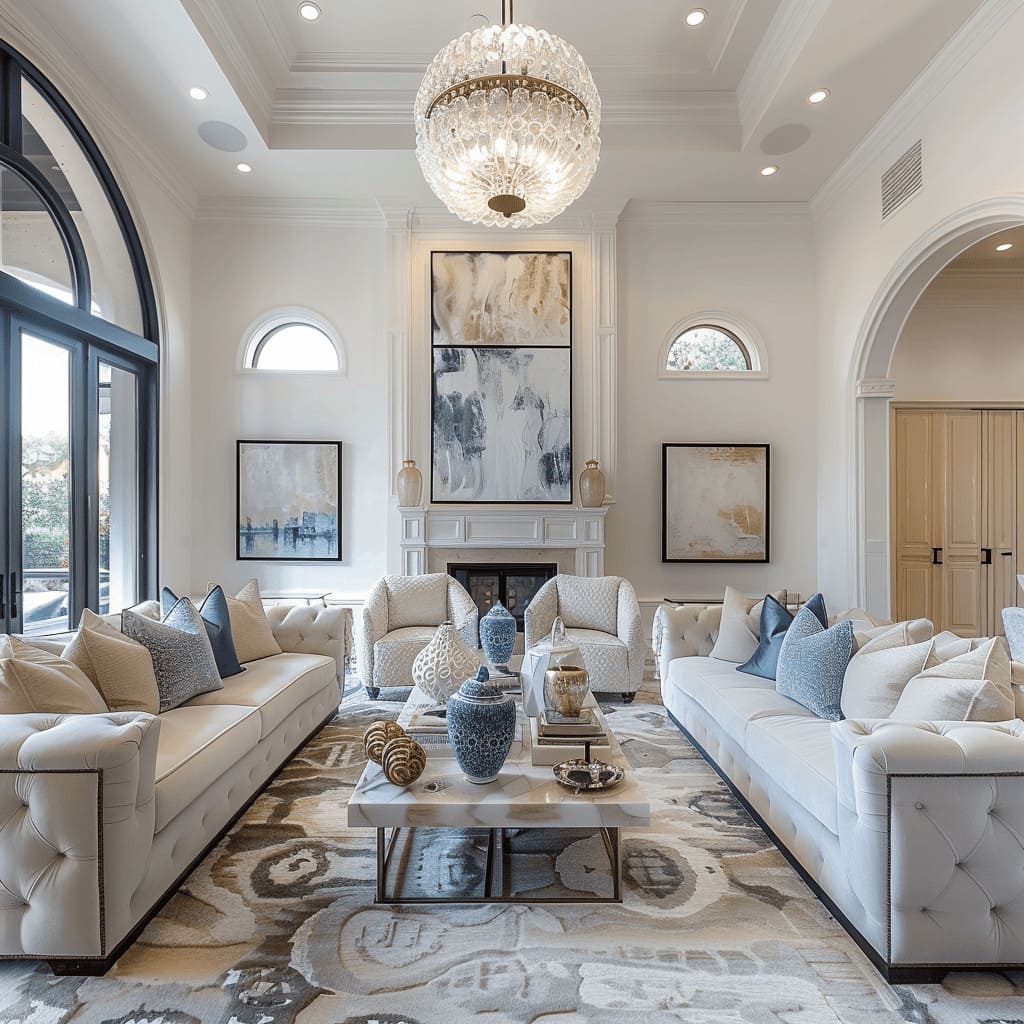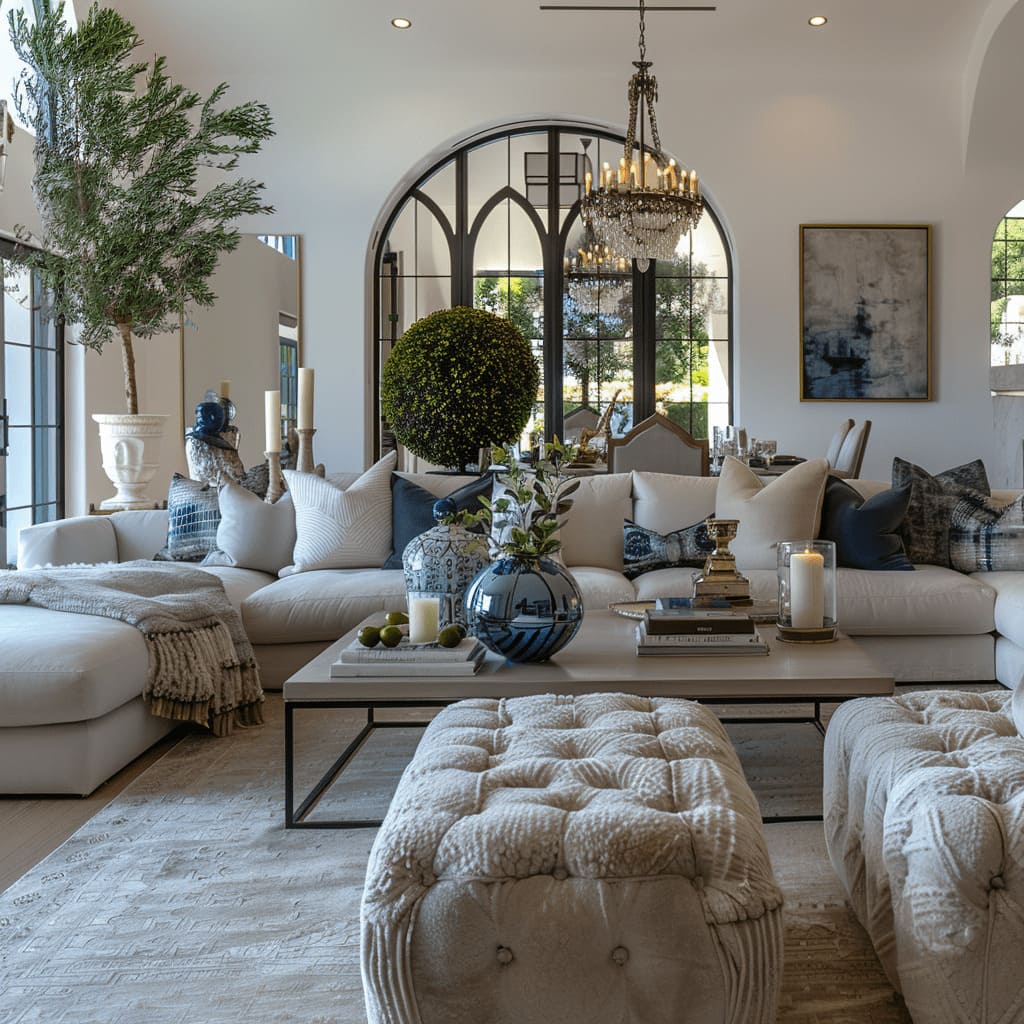Transitional design emerges as an alluring approach to interior decoration, merging the warmth and comfort of traditional aesthetics with the clean profiles and understated colors of the contemporary style. This design strategy fosters an atmosphere that is both classic and current, sophisticated yet accessible.
It’s the art of balancing, not just in terms of style, but also in creating a harmonious environment that resonates with personal tastes.
The beauty of a transitional design lies in its versatility. It appeals to those who find traditional design too ornate but still seek the warmth that modern minimalist styles often lack.
It’s an ideal choice for creating a space that feels refined without being overly formal, and comfortable without leaning towards casual. This blend achieves a timeless quality, ensuring the space does not succumb to the fleeting nature of design trends.
At its core, transitional design is about finding the middle ground. It’s neither too cold nor too exuberant, embracing the subtlety of clean lines and the coziness of classic formality.
Furniture with simple silhouettes and comfortable upholstery, color palettes that soothe rather than startle, and a light-handed approach to decor mark the transitional interior.
Transitional design can be thought of as the Goldilocks of interior decor styles – just right. It is characterized by a minimalist color range, simple but sophisticated furniture, and a lack of fuss.
Every element has a purpose, and there’s a significant focus on the balance of design elements like line, color, and texture.
Drawing from the past, transitional design often incorporates classic lines and shapes that have stood the test of time. It then brings these elements into the present with updates to fabric choices, color schemes, and modern craftsmanship.
The result is a space that respects tradition without living in the past, functioning effortlessly in the modern world.
Transitional interiors are marked by their neutral color palettes, accentuated with a careful selection of textures and subtle patterns. Furniture pieces boast clean lines but are more substantial than their modern counterparts, often featuring wood with rich finishes that add depth and warmth to the space.
Beginning with a clear vision is essential in transitional design. Before selecting individual pieces, consider the overall feeling you want to evoke in your space.
Create a mood board to visualize how different elements will work together, considering both aesthetics and practical needs. Aim for a balance that invites relaxation and reflects sophistication.
In a transitional space, each piece must be both beautiful and functional. Open layouts are favored, with furniture arranged to promote conversation and movement.
Storage should be ample but discreet, maintaining a clutter-free environment that enhances the sense of serenity and order. A focal point in transitional design anchors the room and provides a place for the eye to rest.
This could be an architectural feature, like a fireplace, a large piece of art, or a statement light fixture. The focal point sets the tone for the room, with other elements complementing it rather than competing for attention.
The transitional color palette relies heavily on a foundation of neutrals. Cream, taupe, beige, and gray provide a canvas that allows textures and shapes to stand out.
These subdued hues contribute to the room’s serene and inviting atmosphere. When selecting your palette, consider the mood you want to set.
Neutrals work wonderfully to create a soothing backdrop, but you can also introduce one or two subdued hues to add personality without overwhelming the senses. Think soft blues, greens, or even muted purples for a touch of understated elegance.
Neutral tones in transitional design serve not only as a safe choice but also as a strategic one. They allow for the seamless integration of various design elements without overwhelming the senses.
To prevent a monochromatic scheme from appearing flat, layering different shades and textures of neutrals can add complexity and warmth.
While the neutral palette sets a calming stage, the addition of color accents can bring depth and personality to a space. Consider using muted blues, greens, or even metallics as accent colors.
These can be introduced through decorative pillows, artwork, or even a single accent wall, providing a modern and dynamic touch without disturbing the tranquil foundation.
A sophisticated look within a transitional space is often achieved through the strategic use of textures. Textural diversity adds depth and interest to a room, inviting touch and drawing the eye.
For instance, a smooth leather sofa paired with a plush rug or a glossy wood table adjacent to a matte metal lamp. These pairings create a tactile experience that enhances the visual complexity of the space.
When selecting materials, it’s essential to consider both their durability and their aesthetic value. Materials should stand the test of time both in terms of wear and style.
For flooring, engineered hardwood provides a timeless look with enhanced durability. For countertops, quartz offers the beauty of stone with resistance to scratches and stains, suitable for a well-used kitchen or bathroom.
Natural materials play a significant role in grounding transitional design and bringing an organic element to the environment. The use of stone, wood, and natural fibers can introduce an element of the outdoors inside, creating a calm and restorative atmosphere.
These materials also add a level of authenticity and timelessness to the design.
In transitional design, the furniture often serves as a bridge between the classic and the contemporary. An antique-looking credenza might be used alongside a modern minimalist sofa.
The juxtaposition of different design periods brings about a dynamic and curated feel to the space. Proportions are critical in a transitional space to avoid a disjointed feel.
A large room with high ceilings can accommodate more substantial furniture, while a smaller space requires pieces that don’t overwhelm. Furniture should also be proportional to other items in the room, maintaining balance and visual harmony.
Seating should not only look good but feel good as well. Transitional design favors seating that offers both comfort and clean lines.
An upholstered chair with a streamlined profile or a sofa with a simple, structured shape upholstered in a cozy fabric exemplifies this balance. Lighting can dramatically affect the ambiance of a room.
In transitional design, lighting should complement the space’s dual nature. A modern sculptural light fixture can serve as a striking focal point in a room, while more traditional lamp shapes in modern materials or finishes can provide a subtle nod to the past.
Light fixtures in a transitional space should be chosen for both their functionality and their design. Sleek, metallic finishes on chandeliers or sconces can provide a modern edge, while the shapes can remain soft and familiar.
The choice of lighting fixtures can act as a unifying element that ties the room’s design together.
Layered lighting is about combining various types of light sources to create a warm and inviting space. Ambient lighting sets the overall mood, task lighting focuses on specific areas for reading or work, and accent lighting highlights architectural features or artwork.
By layering these types of lighting, one can achieve a functional yet inviting atmosphere that complements the transitional style.
When choosing decor, it’s important to strike a balance that complements the transitional style. Decorative pieces should resonate with both the modern and classic aspects of the room.
For example, a sleek vase or a contemporary sculpture can sit atop a more traditional console table, allowing for a blend of different design periods without clashing.
Art plays a vital role in transitional interiors, serving as a conversation starter or a visual resting place. Opt for pieces that evoke emotion or intrigue without dominating the room.
Abstract pieces with a restrained color palette or classic art in modern frames can bridge the gap between old and new. Rugs and throws are the perfect tools for introducing texture and warmth into a transitional space.
A hand-knotted wool rug can anchor the furniture, while throws made of cashmere or soft woven fabrics can invite relaxation and comfort. These elements are key in softening the modern lines typically found in transitional furniture.
The fabrics in a transitional space should unify the design. This could mean selecting a linen drapery that complements the plushness of the sofa or choosing a fabric for the chairs that echoes the room’s accent colors.
The fabrics serve as a connective tissue, linking all the room’s elements. Patterns and prints in transitional design should be used sparingly and thoughtfully.
Simple geometric patterns or subtle stripes can add visual interest without overwhelming the space. The key is to maintain a serene environment, so these patterns should not be too loud or vivid.
Durability is just as important as aesthetics when it comes to textiles. Choose materials that can withstand daily use, and be mindful of their care and maintenance.
Textiles that are easy to clean and maintain will ensure that the space not only looks good but stays looking good over time.
Accessories in a transitional space should reflect elegance and personal style. They are the details that make a house a home.
Items such as unique coasters, elegant trays, or an exquisite clock can enhance the room’s design while showcasing the homeowner’s personality. Collections should be displayed in a way that feels intentional and integrated into the space.
Whether it’s a series of framed photographs, antique books, or travel souvenirs, these items should be arranged thoughtfully. By grouping collections together, you create a visual impact and a personal touch.
Plants can breathe life into a transitional space, books can add a scholarly touch, and personal items tell the story of the inhabitants. Incorporating these elements should feel organic and natural.
They provide the finishing touches that make a room feel complete and lived-in. When choosing decor, it’s important to strike a balance that complements the transitional style.
Decorative pieces should resonate with both the modern and classic aspects of the room. For example, a sleek vase or a contemporary sculpture can sit atop a more traditional console table, allowing for a blend of different design periods without clashing.
Art plays a vital role in transitional interiors, serving as a conversation starter or a visual resting place. Opt for pieces that evoke emotion or intrigue without dominating the room.
Abstract pieces with a restrained color palette or classic art in modern frames can bridge the gap between old and new. Rugs and throws are the perfect tools for introducing texture and warmth into a transitional space.
A hand-knotted wool rug can anchor the furniture, while throws made of cashmere or soft woven fabrics can invite relaxation and comfort. These elements are key in softening the modern lines typically found in transitional furniture.
The fabrics in a transitional space should unify the design. This could mean selecting a linen drapery that complements the plushness of the sofa or choosing a fabric for the chairs that echoes the room’s accent colors.
The fabrics serve as a connective tissue, linking all the room’s elements. Patterns and prints in transitional design should be used sparingly and thoughtfully.
Simple geometric patterns or subtle stripes can add visual interest without overwhelming the space. The key is to maintain a serene environment, so these patterns should not be too loud or vivid.
Durability is just as important as aesthetics when it comes to textiles. Choose materials that can withstand daily use, and be mindful of their care and maintenance.
Textiles that are easy to clean and maintain will ensure that the space not only looks good but stays looking good over time.
Accessories in a transitional space should reflect elegance and personal style. They are the details that make a house a home.
Items such as unique coasters, elegant trays, or an exquisite clock can enhance the room’s design while showcasing the homeowner’s personality. Collections should be displayed in a way that feels intentional and integrated into the space.
Whether it’s a series of framed photographs, antique books, or travel souvenirs, these items should be arranged thoughtfully. By grouping collections together, you create a visual impact and a personal touch.
Plants can breathe life into a transitional space, books can add a scholarly touch, and personal items tell the story of the inhabitants. Incorporating these elements should feel organic and natural.
They provide the finishing touches that make a room feel complete and lived-in. In a well-designed transitional home, each room should flow seamlessly into the next.
This is achieved by repeating certain elements such as color, texture, or material in each space. Consistent use of wood finishes, fabric choices, or color palettes can guide the eye smoothly from one area to another, creating a sense of continuity.
Consistency is key to a harmonious transitional design. It doesn’t mean every room should look the same, but there should be a common thread.
This could be a recurring metal finish like brushed nickel or a consistent use of a shape or motif throughout the home, lending a sense of unity and purpose to the design choices. To create a narrative through the home, consider how each room connects to the next.
A transitional rug in the living room can pick up the color of the dining chairs, or the living room’s drapery fabric might be echoed in the throw cushions of the adjoining den. It’s these subtle nods that create a cohesive journey through the living spaces.
A thoughtful layout encourages a natural flow of movement. Transitional spaces should not feel crowded; instead, they should promote easy passage between areas.
Furniture should be arranged to direct traffic in a way that makes sense, with ample space around pieces for comfortable navigation. Symmetry conveys balance and formality, which can be very pleasing in a transitional design.
However, asymmetry can add visual interest and a sense of modernity. Striking the right balance can involve symmetrical large-scale furniture arrangements with asymmetrical accessories or art.
Even in expansive rooms, intimate seating arrangements can make the space feel cozy and inviting. Use smaller furniture groupings within the larger room to create zones for conversation or individual reflection, bridging the gap between grandeur and comfort.
Before starting your design project, establish a realistic budget. Factor in the cost of materials, labor, furniture, and unforeseen expenses.
This financial plan will guide your decisions and help prioritize where to invest in quality and where to find savings.
Certain items warrant a higher price tag due to their impact and longevity. Investing in high-quality foundational pieces like sofas or dining tables can offer better longevity and style retention, making them worth the initial expense.
Save on items that are trendy or subject to wear and tear. For instance, accent pillows, less-used side chairs, or seasonal decor can be areas to economize.
These are easier to replace and update as they wear out or go out of style.
Consider which parts of the project are suitable for DIY and which require professional expertise. Painting and simple upgrades can be personal projects, while electrical work or complex carpentry might necessitate hiring a professional.
Break the project down into manageable phases, starting with structural changes and moving to aesthetic updates. Keep a detailed timeline and checklist to stay on track.
Regularly review your budget and schedule to adjust as necessary, ensuring the project moves forward smoothly.
